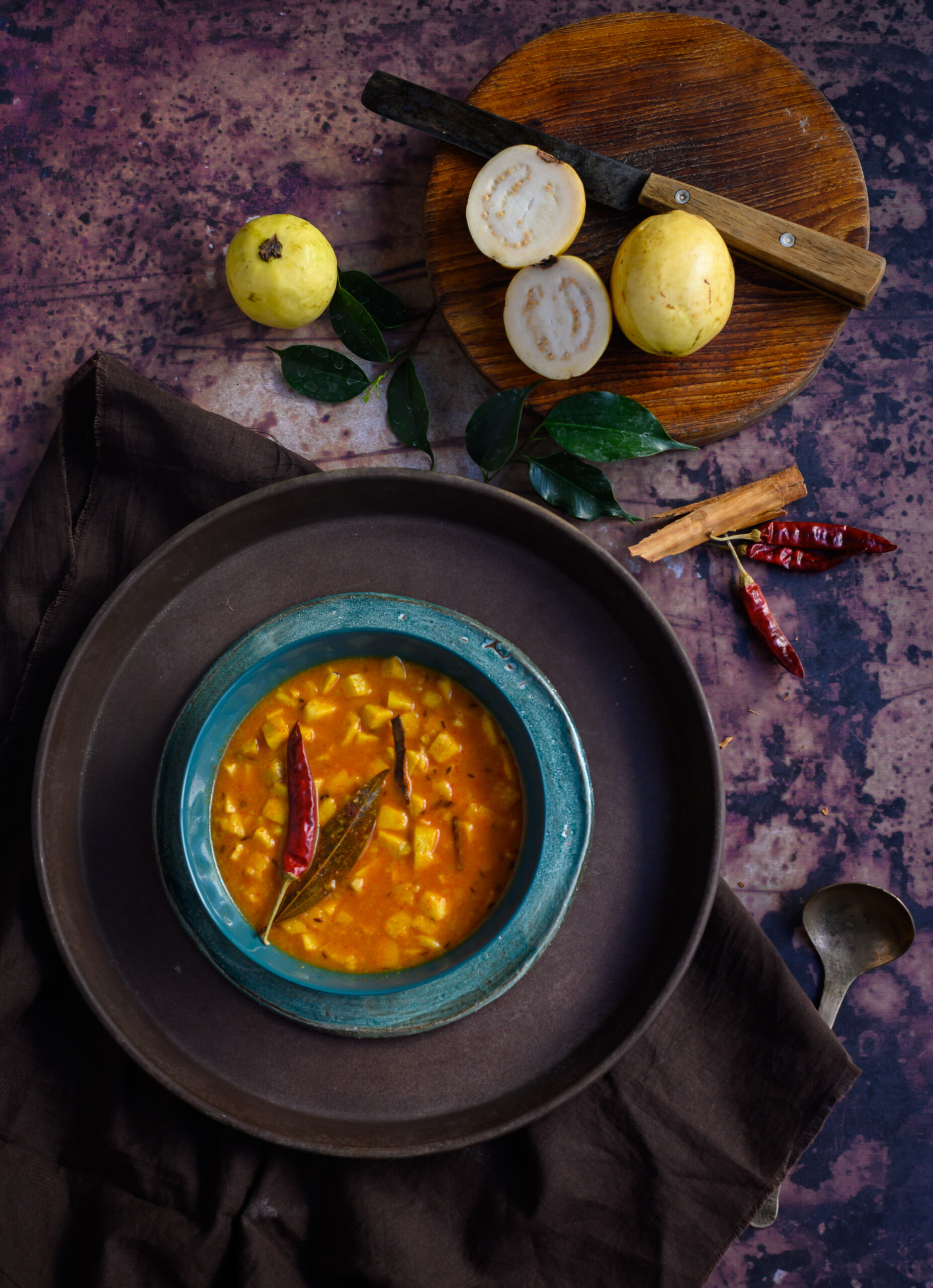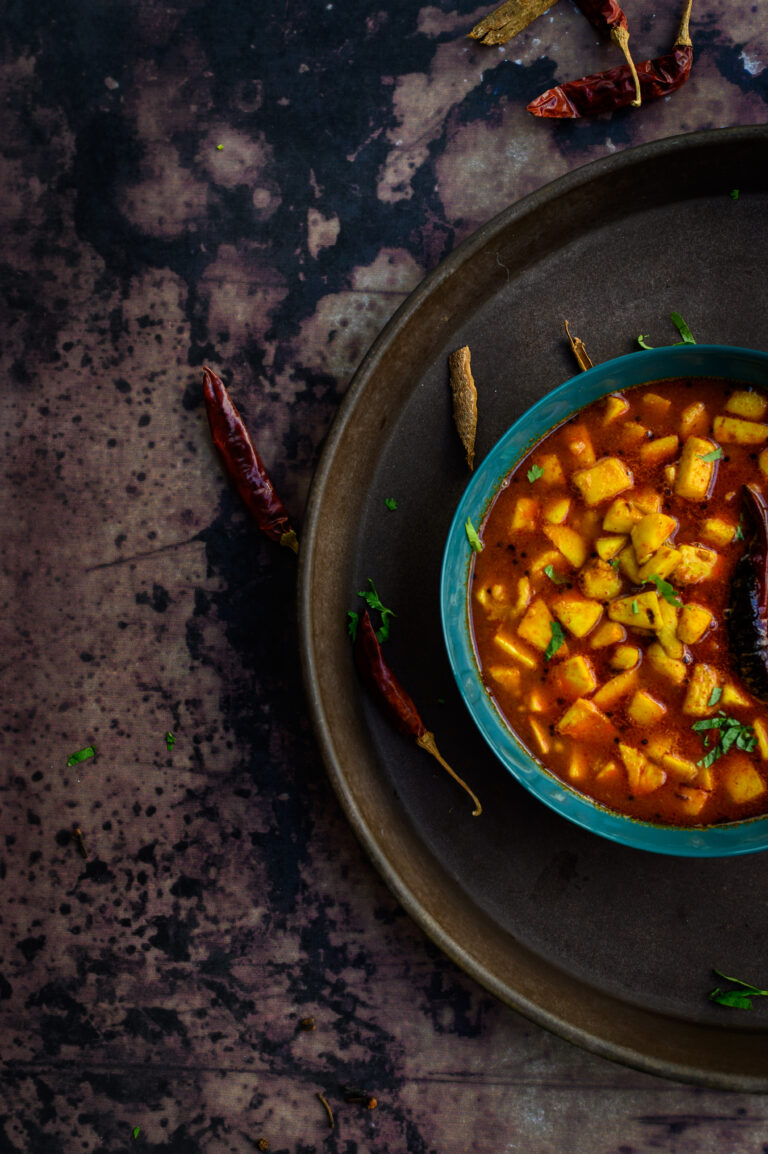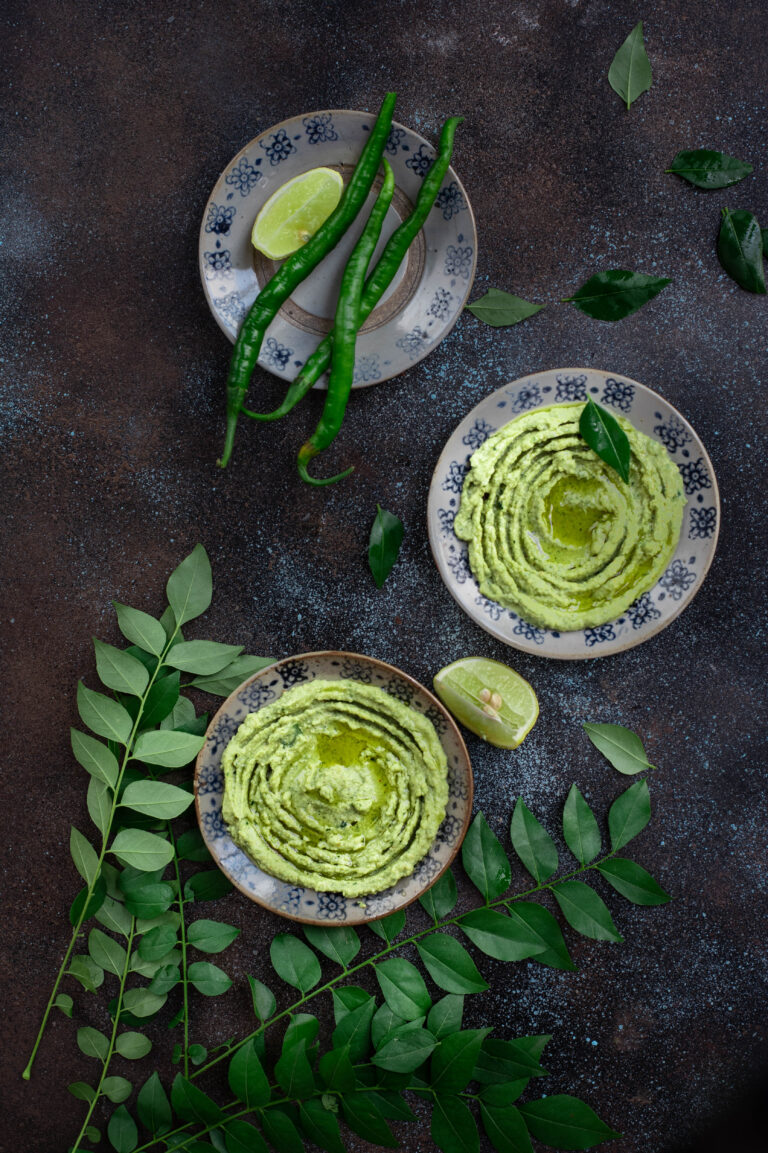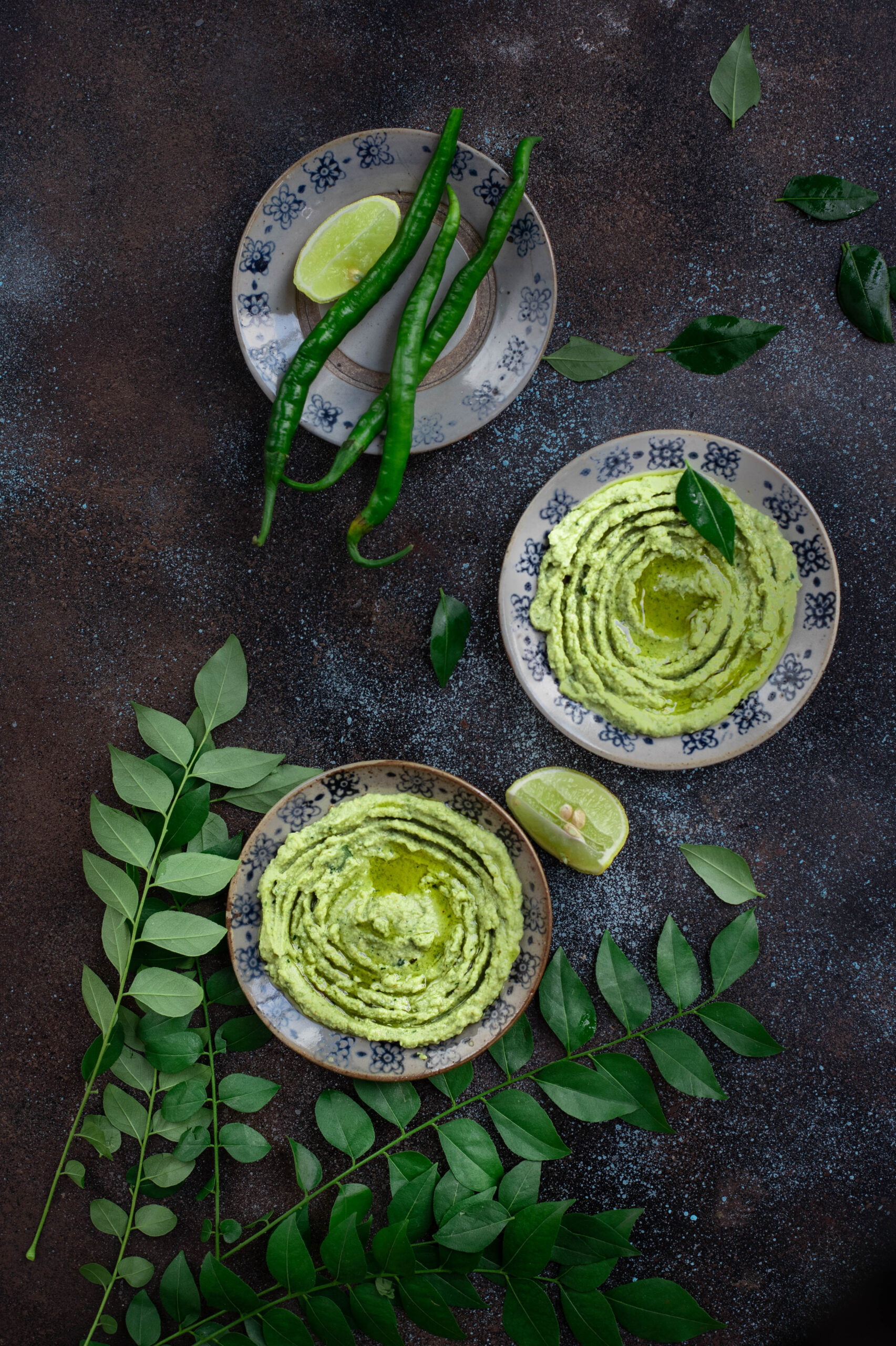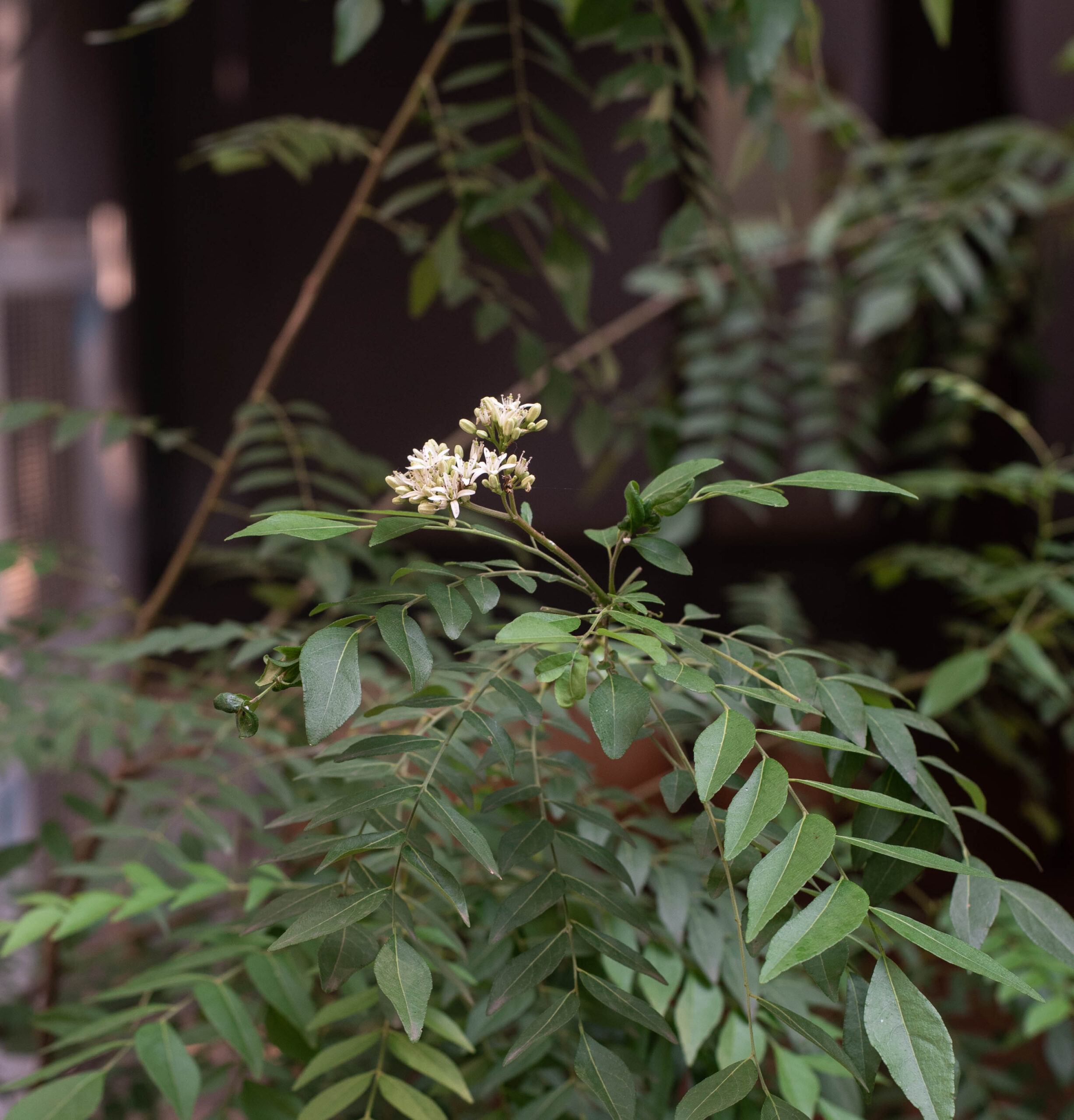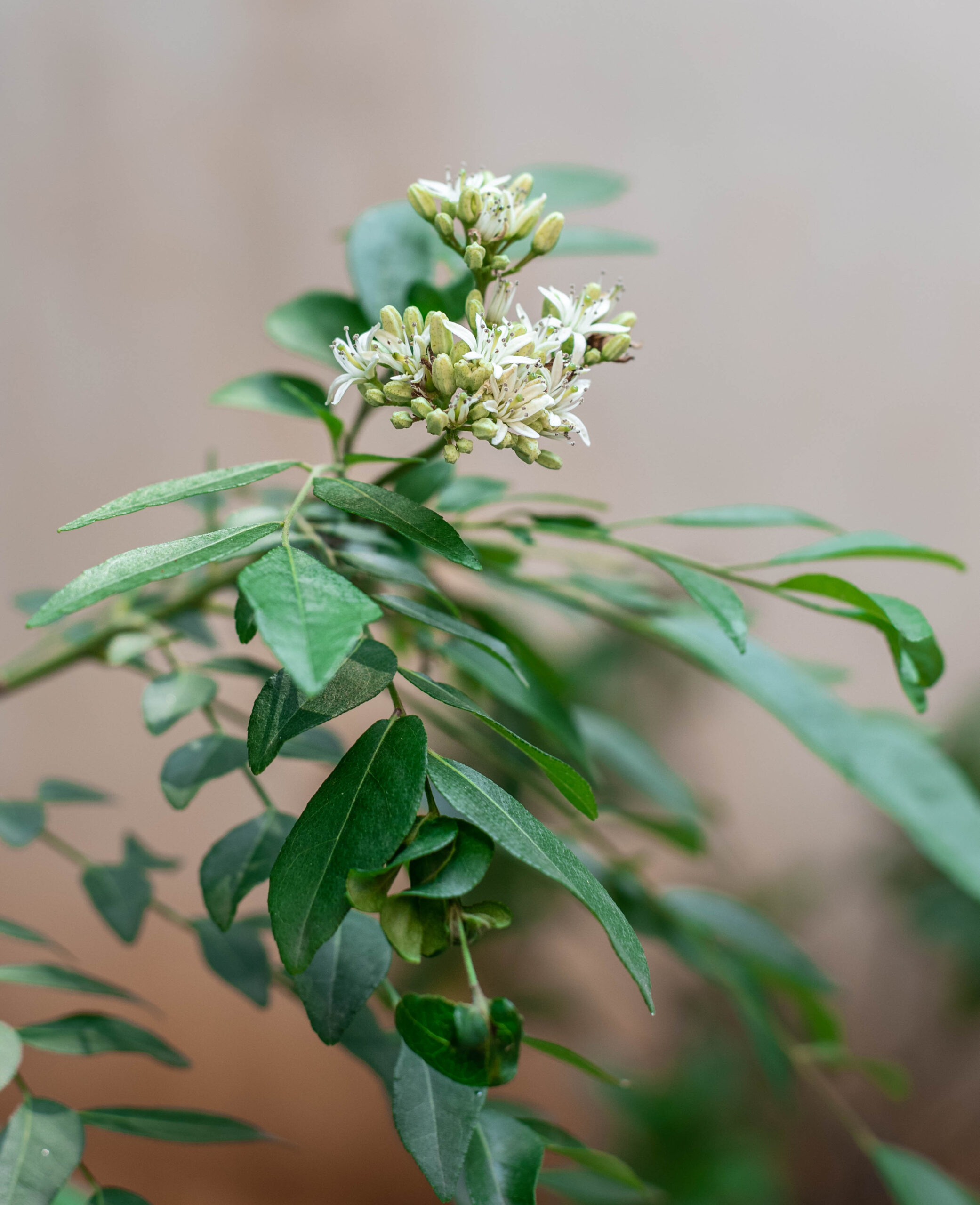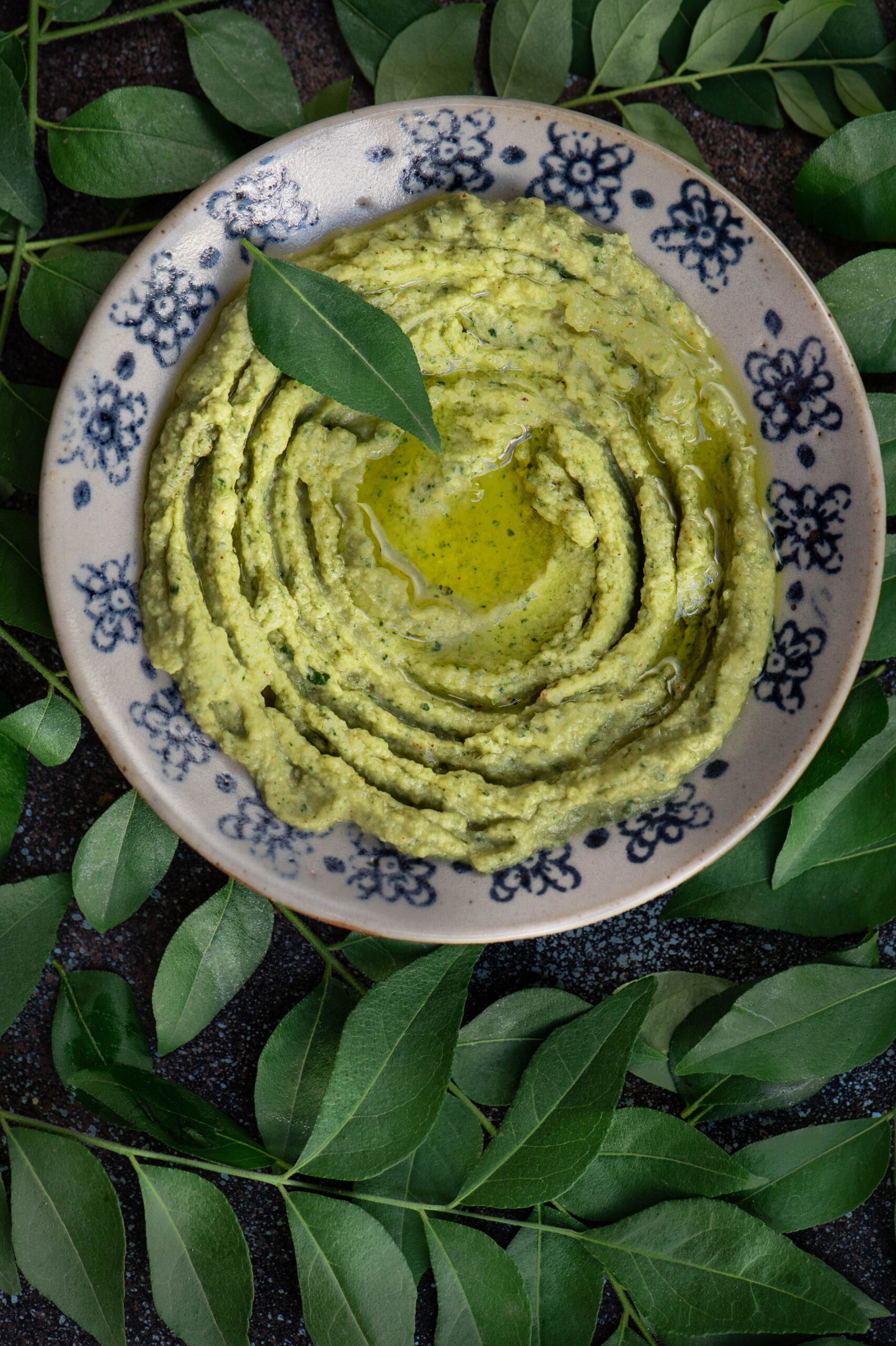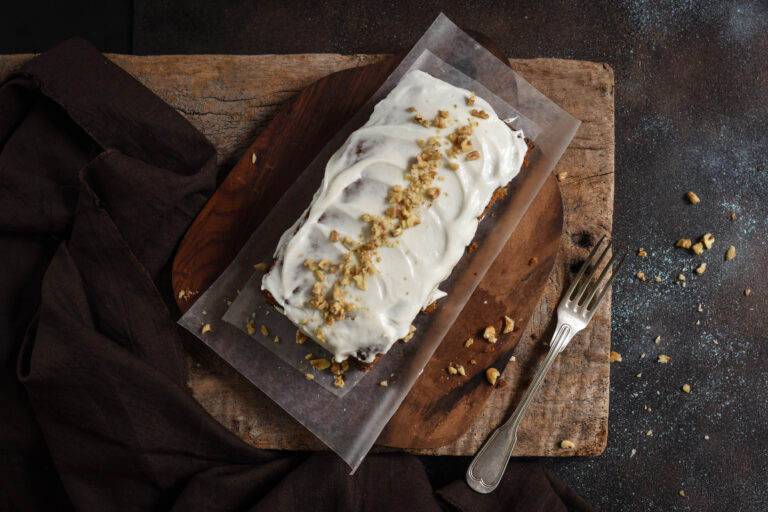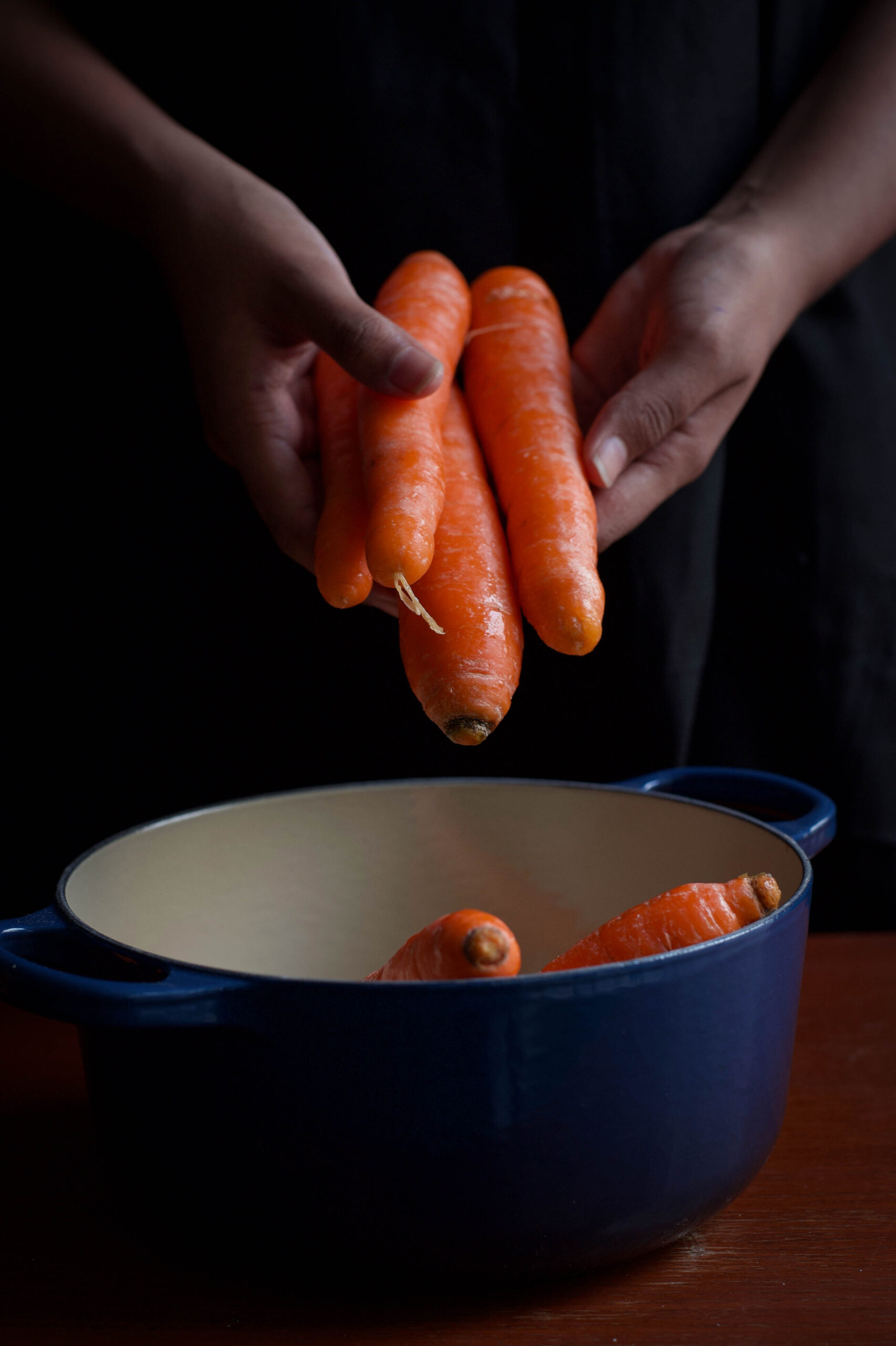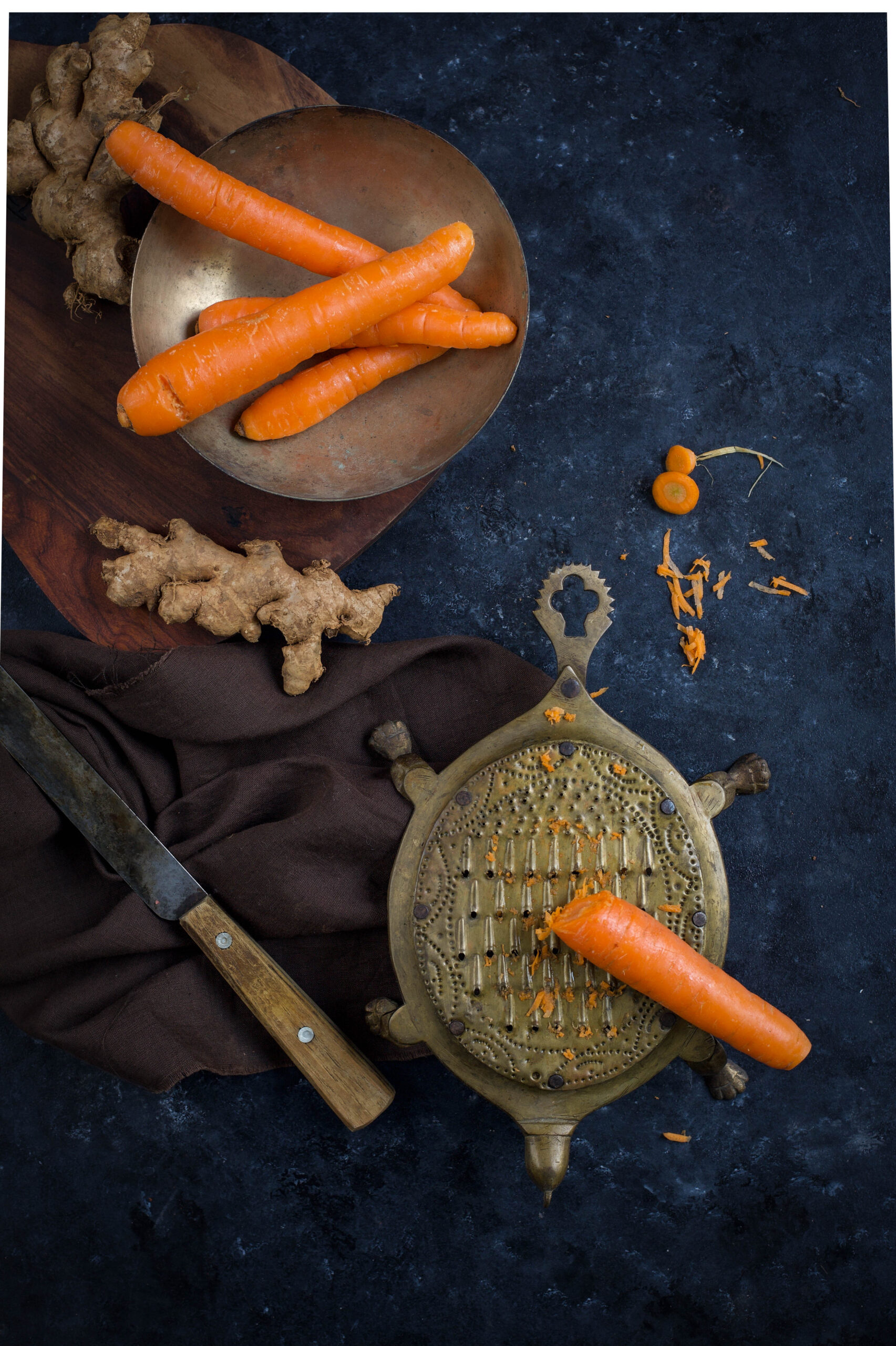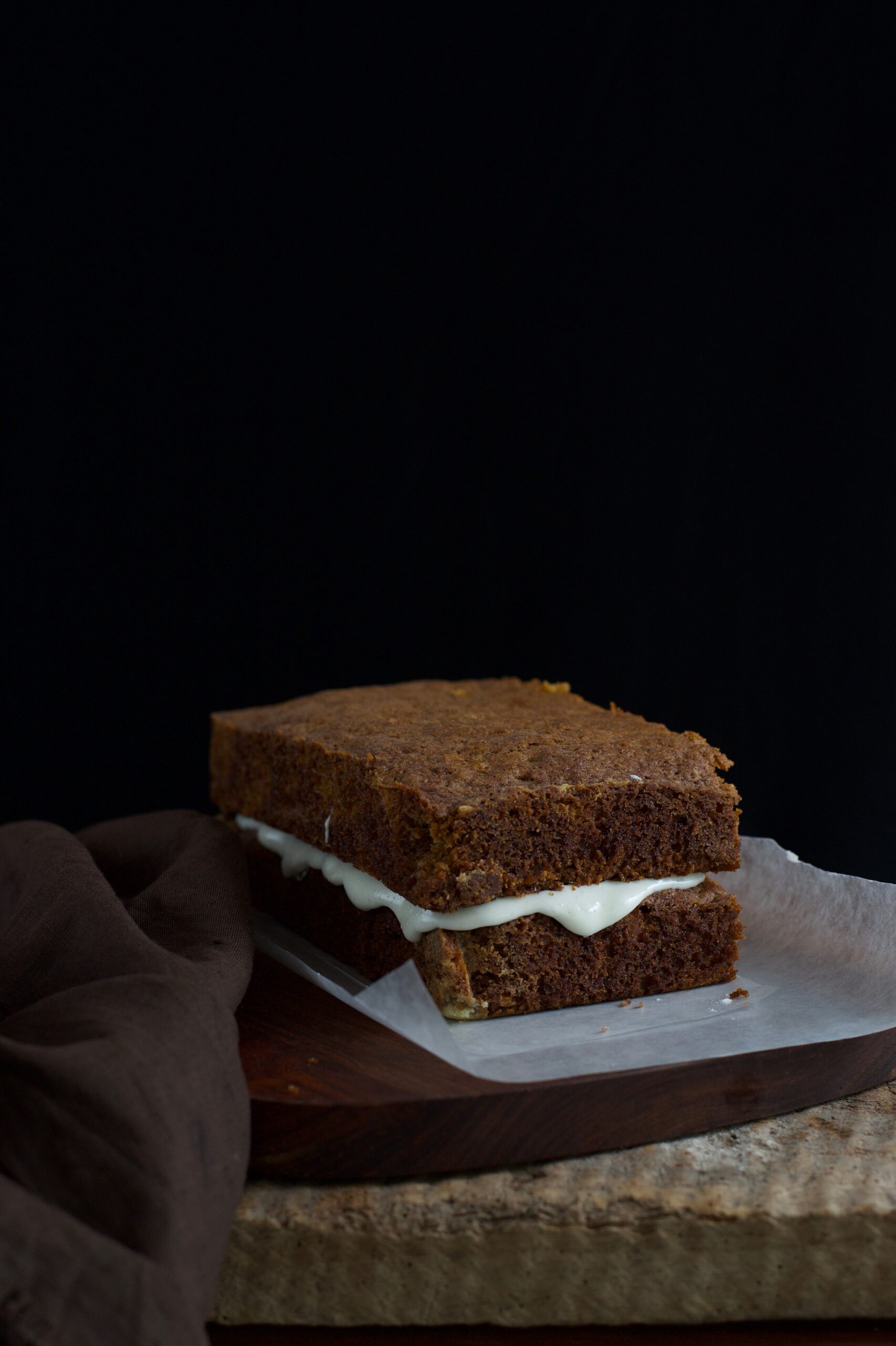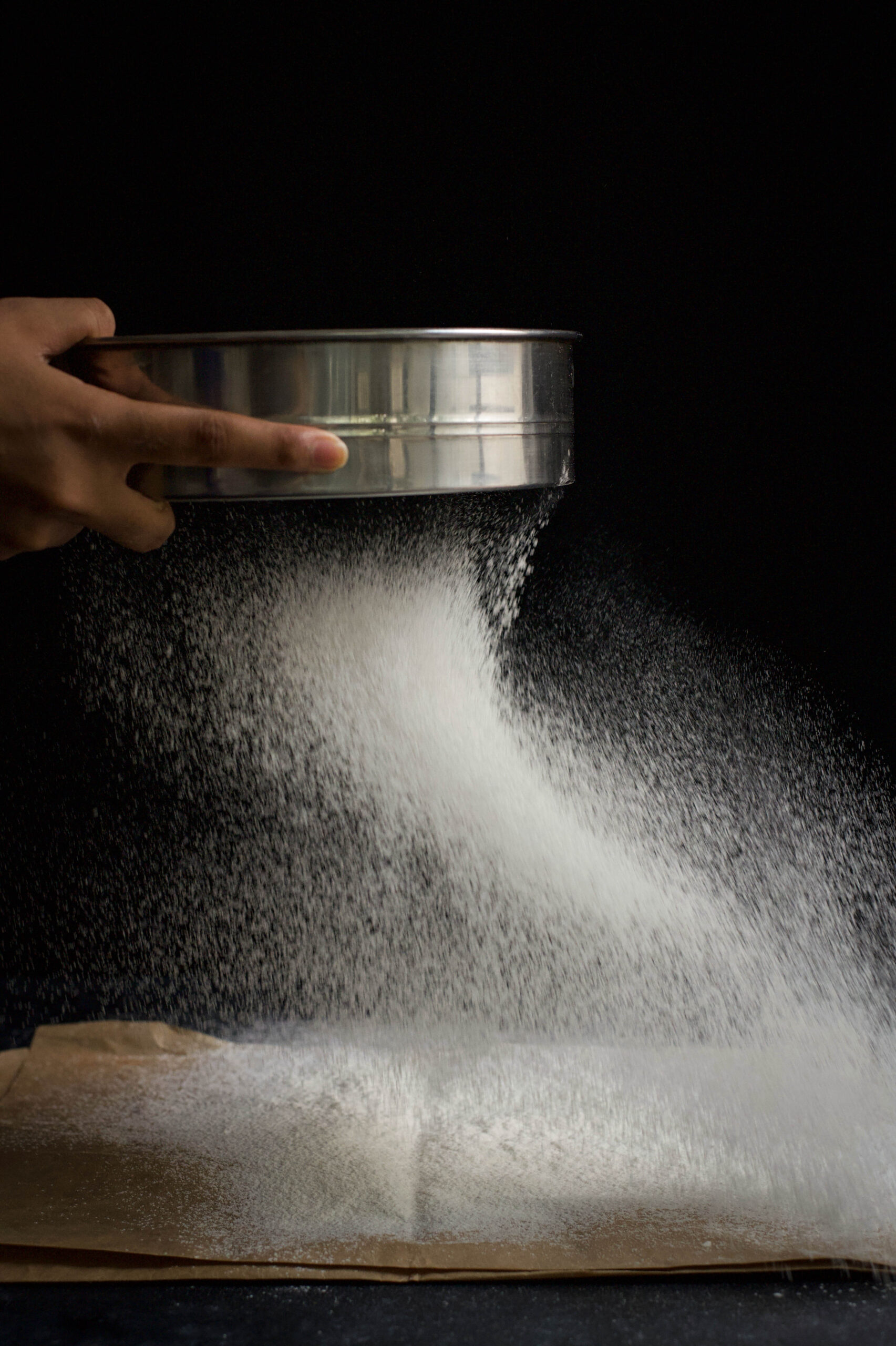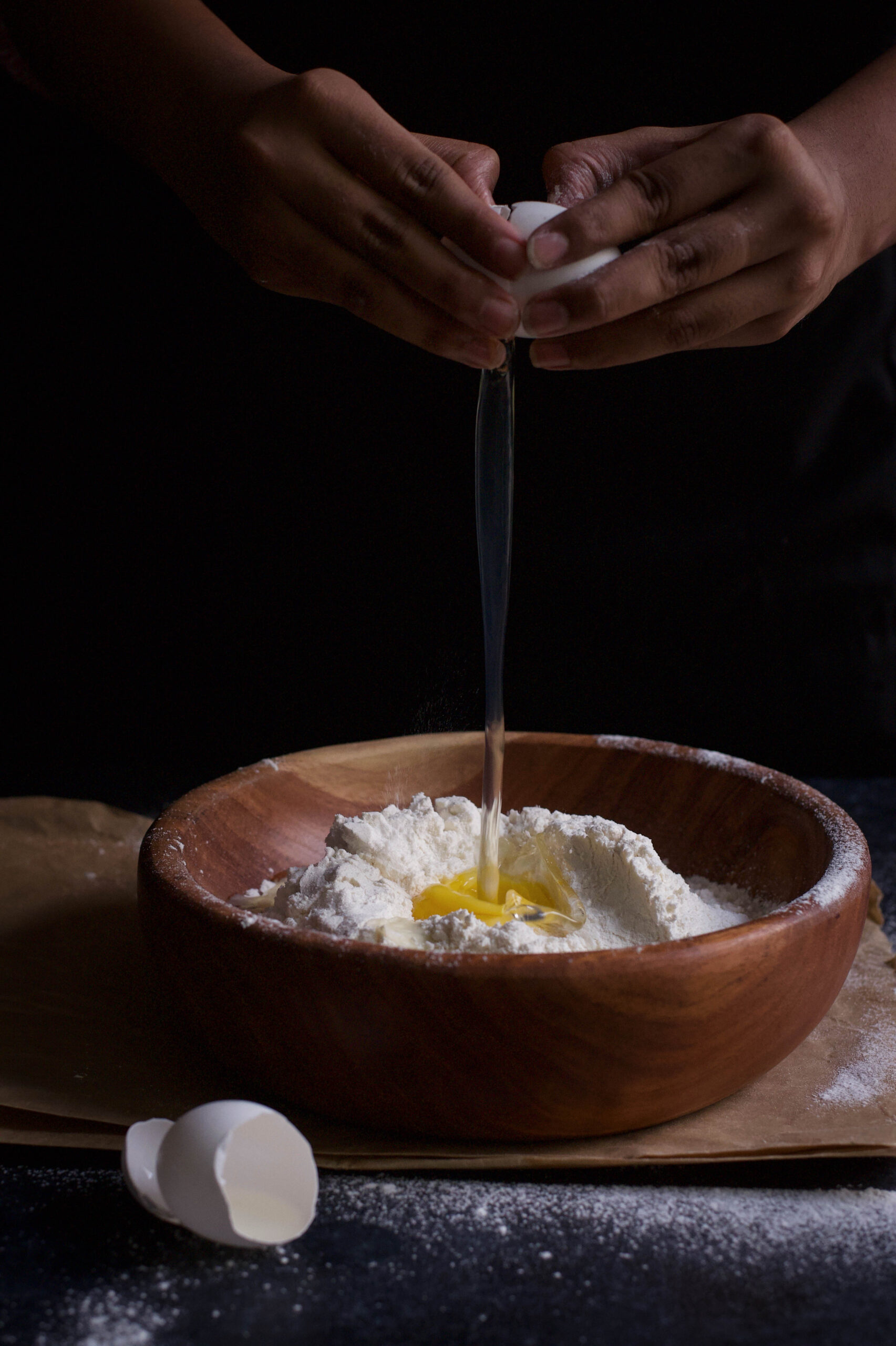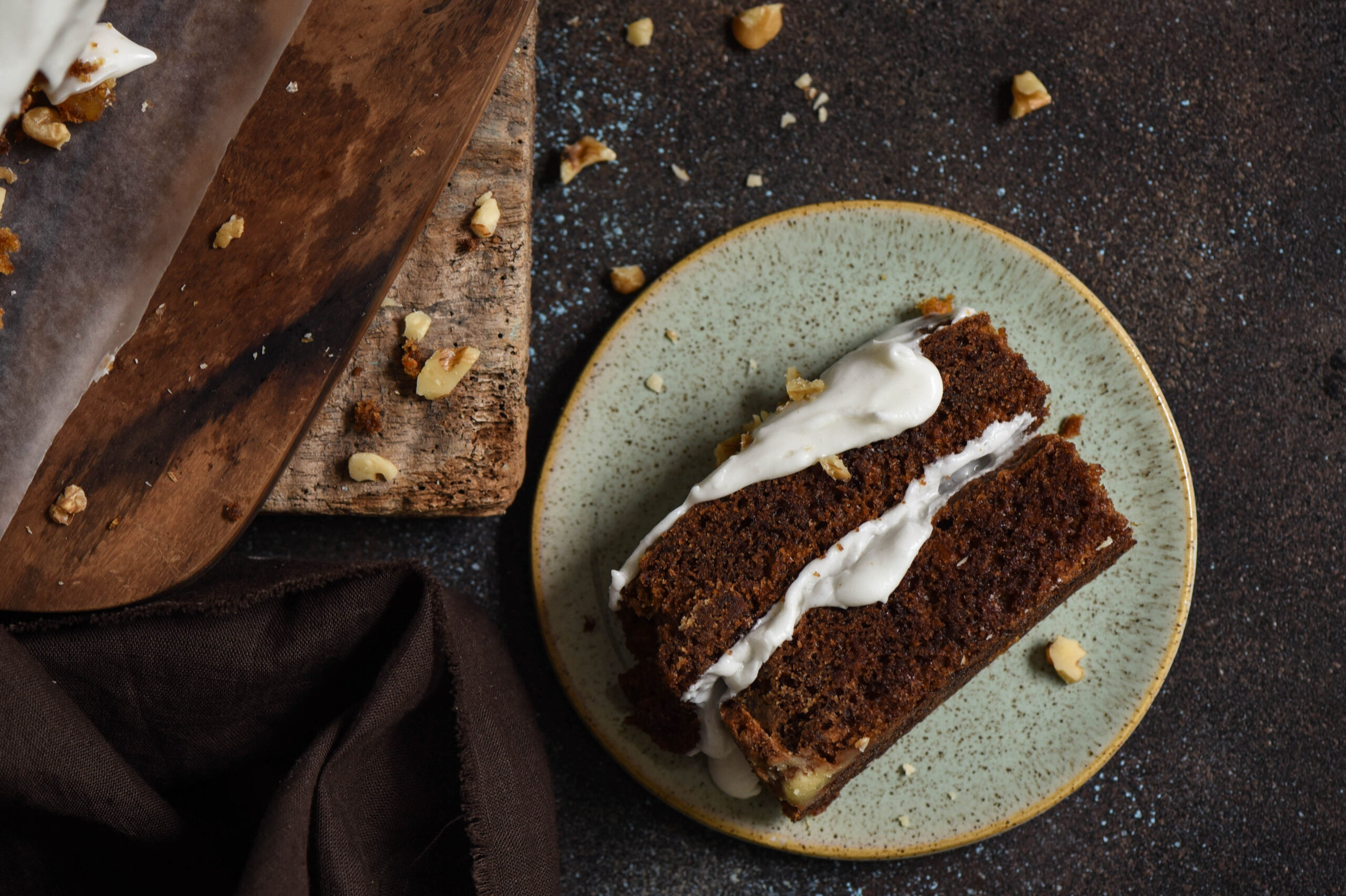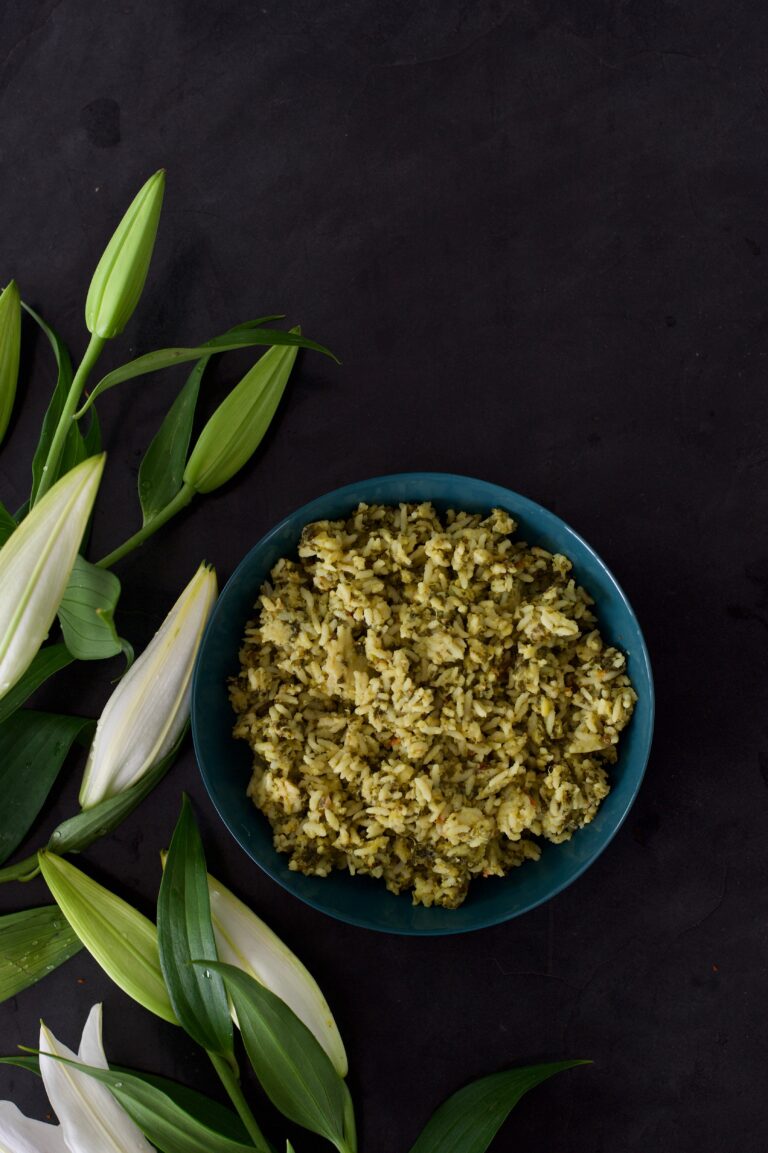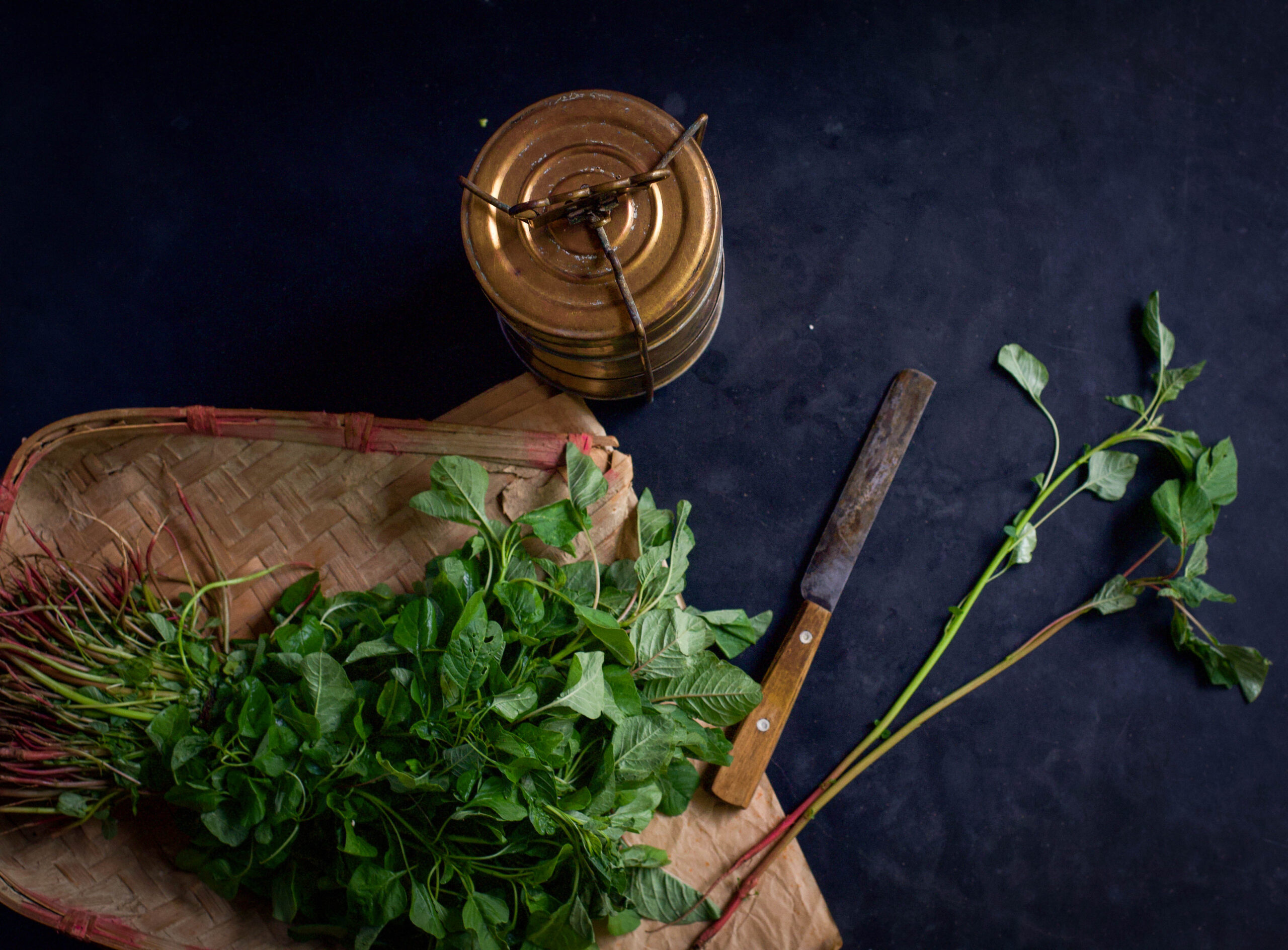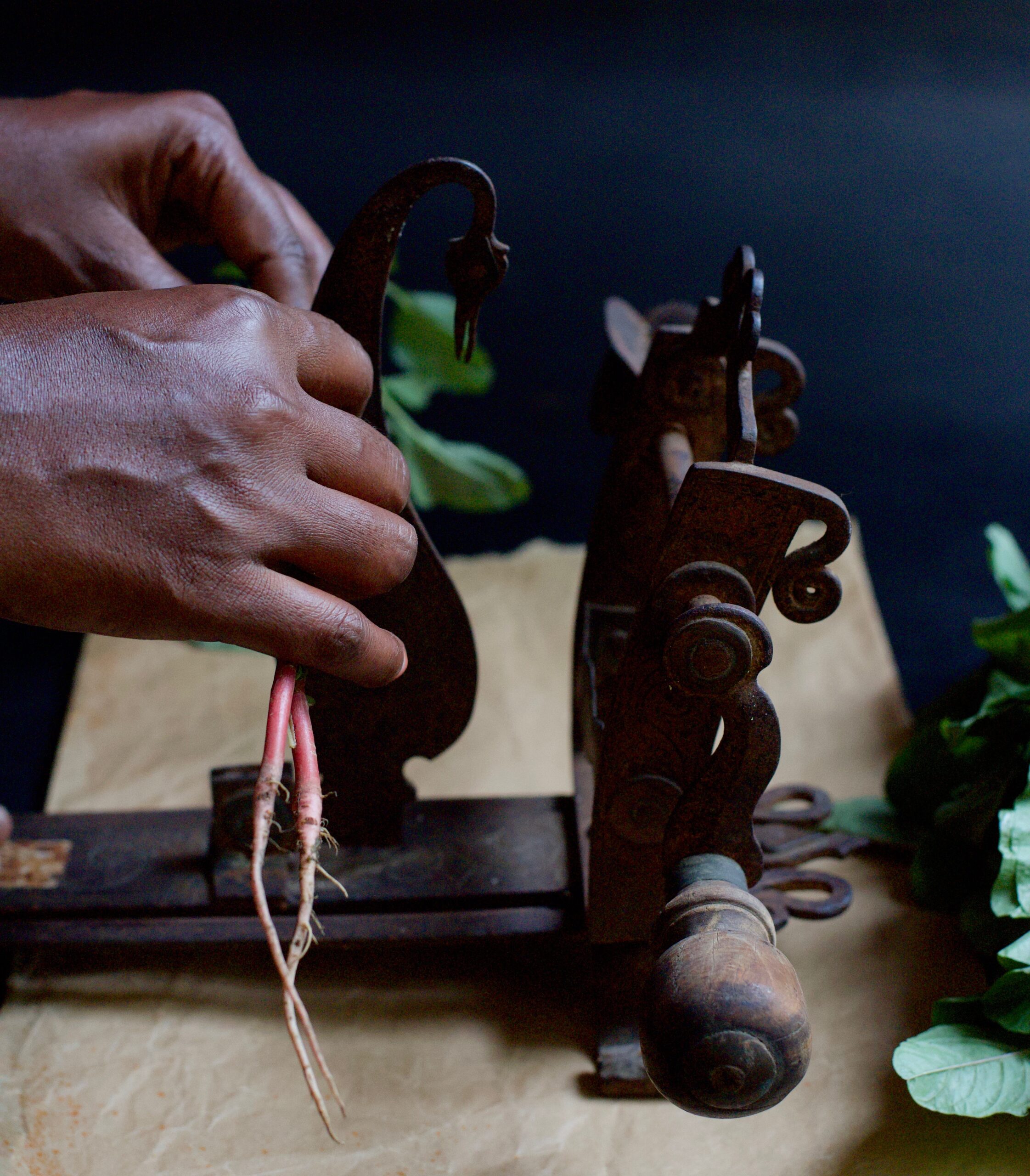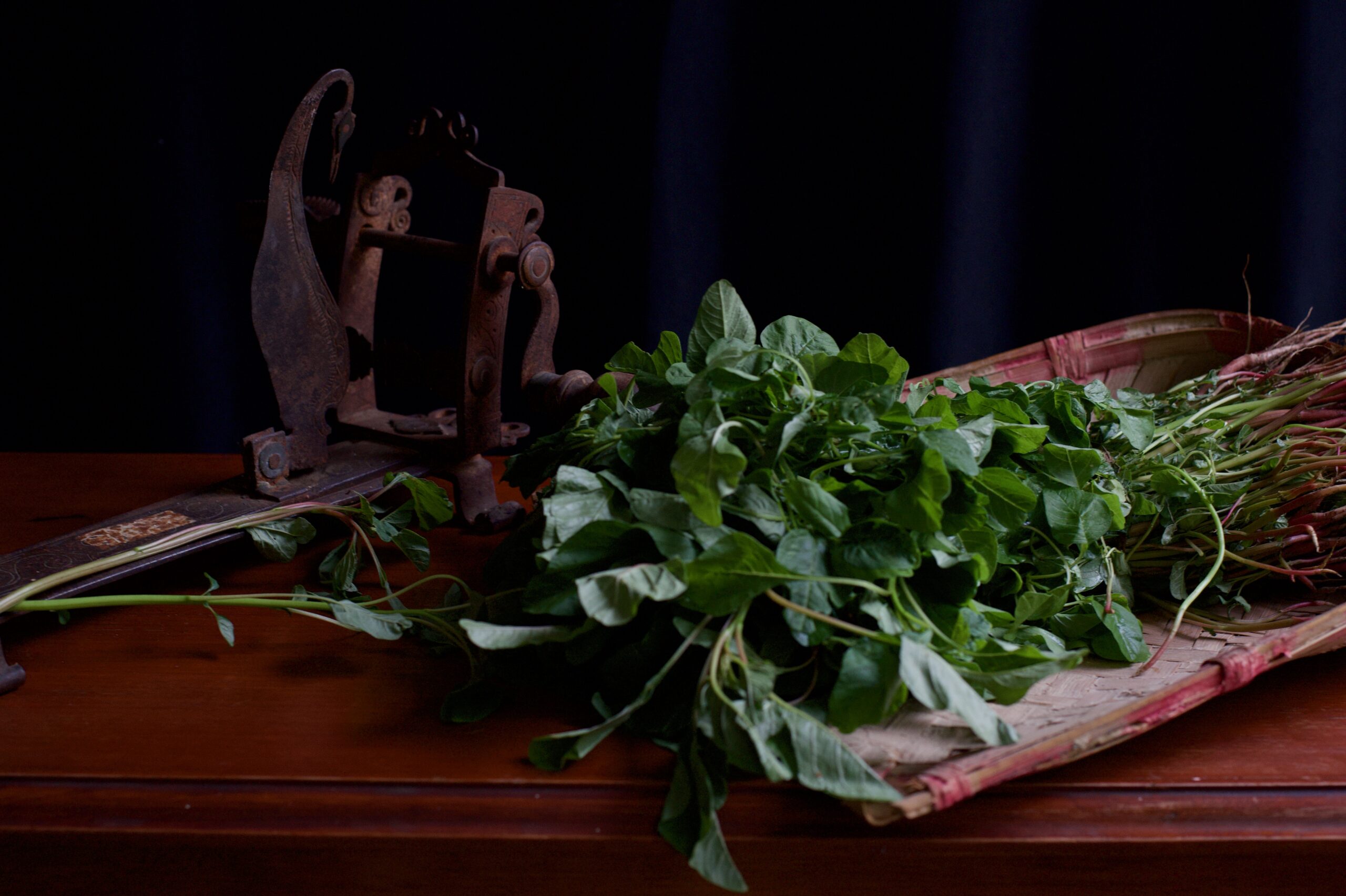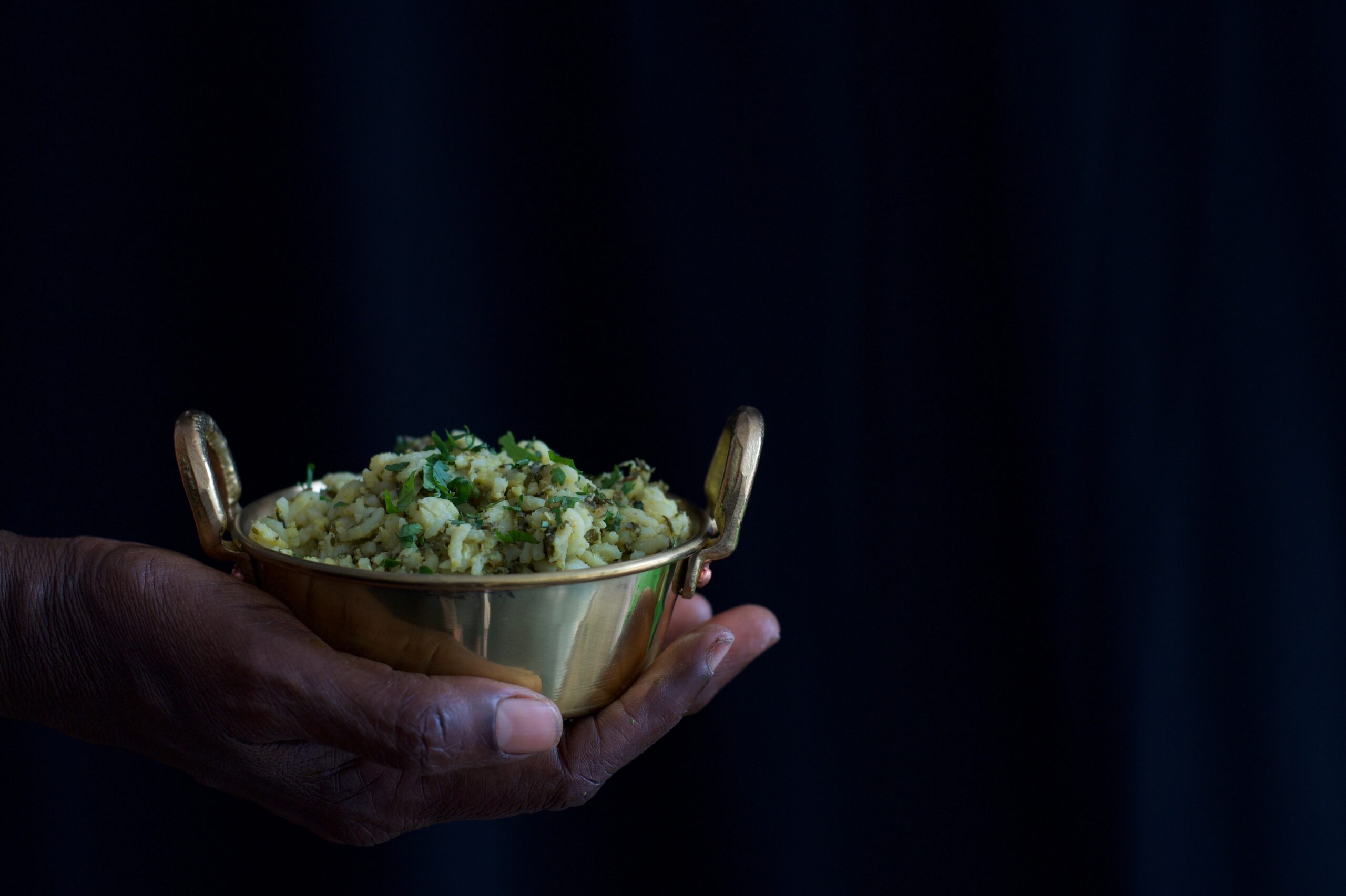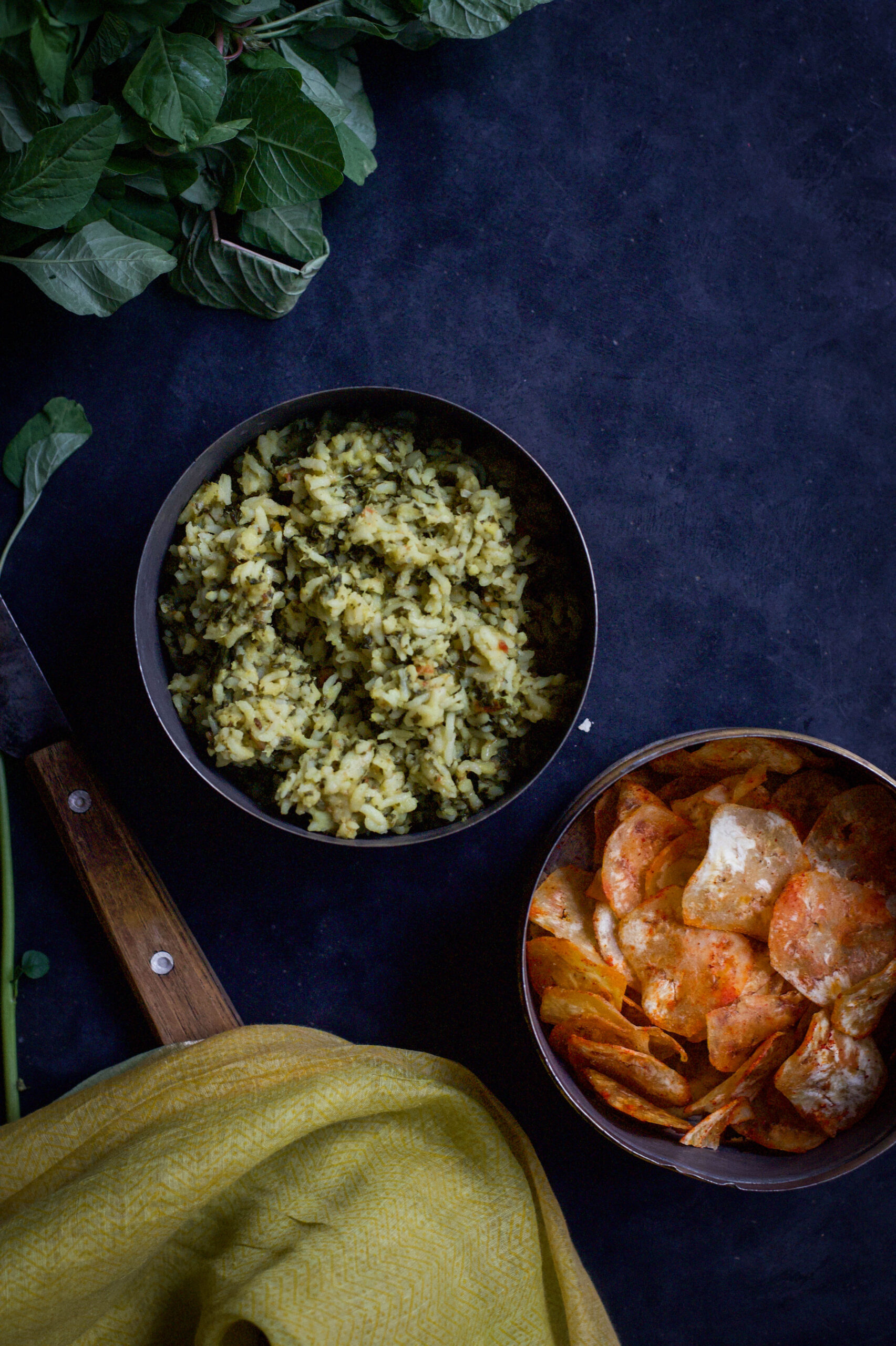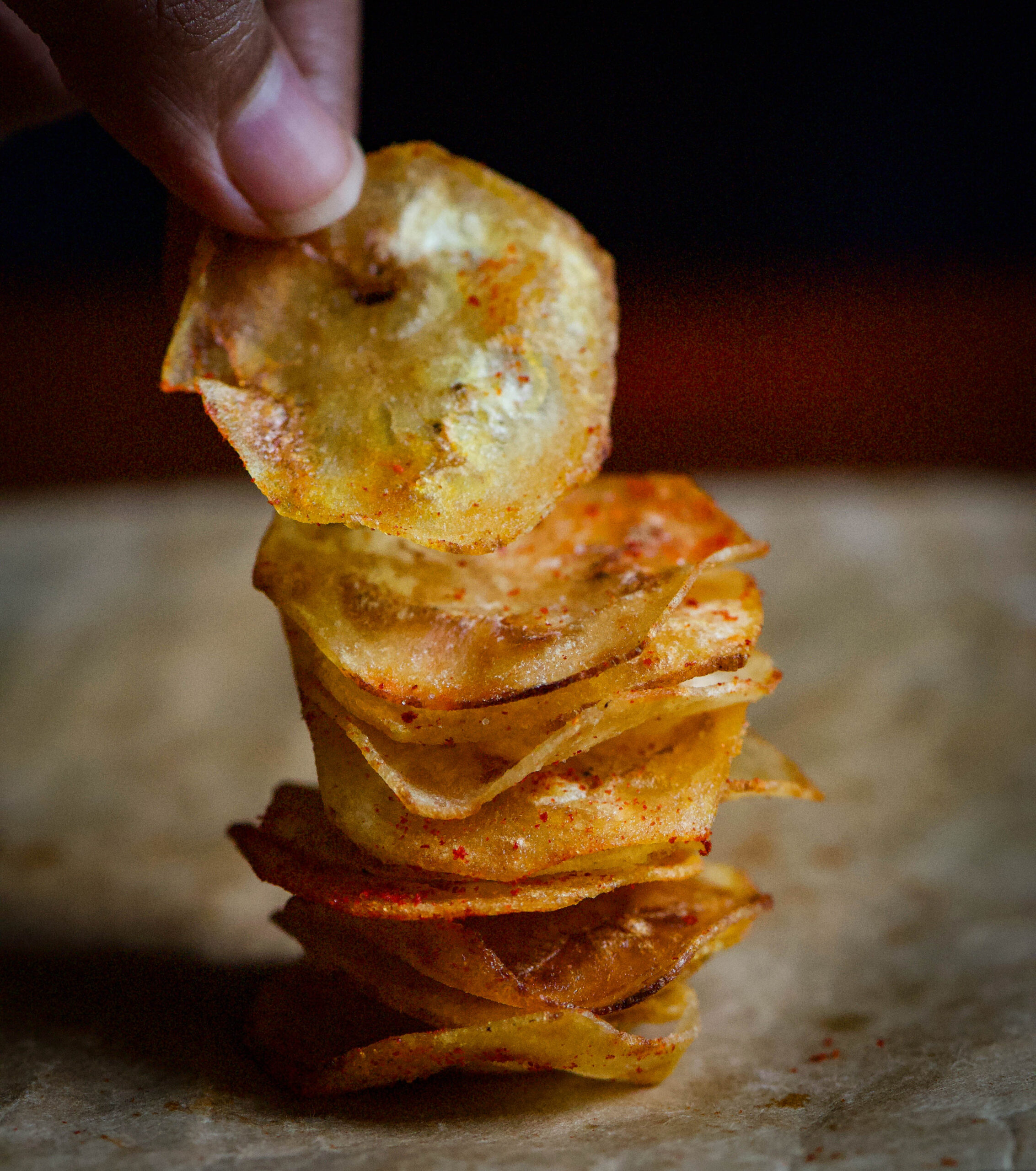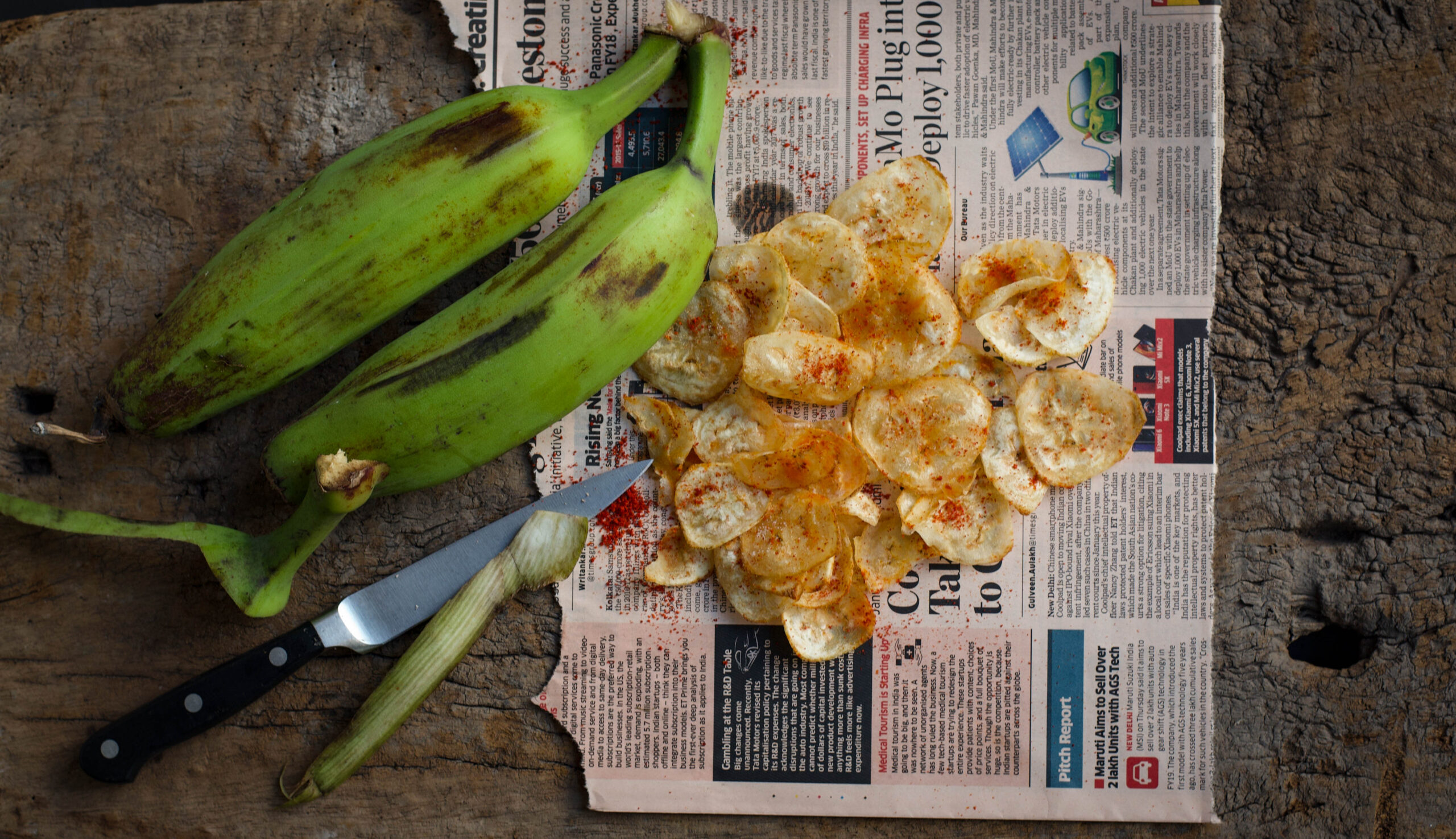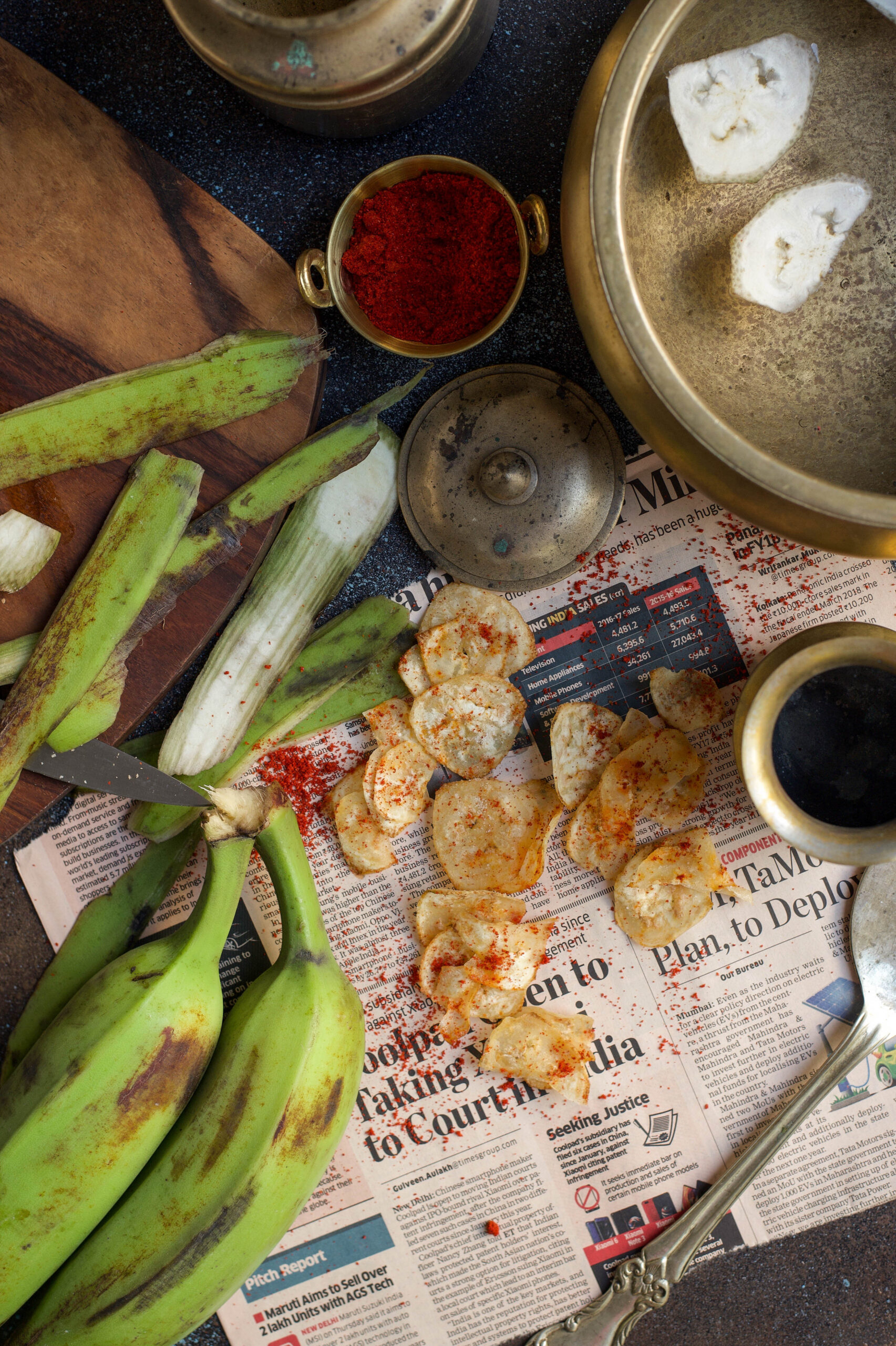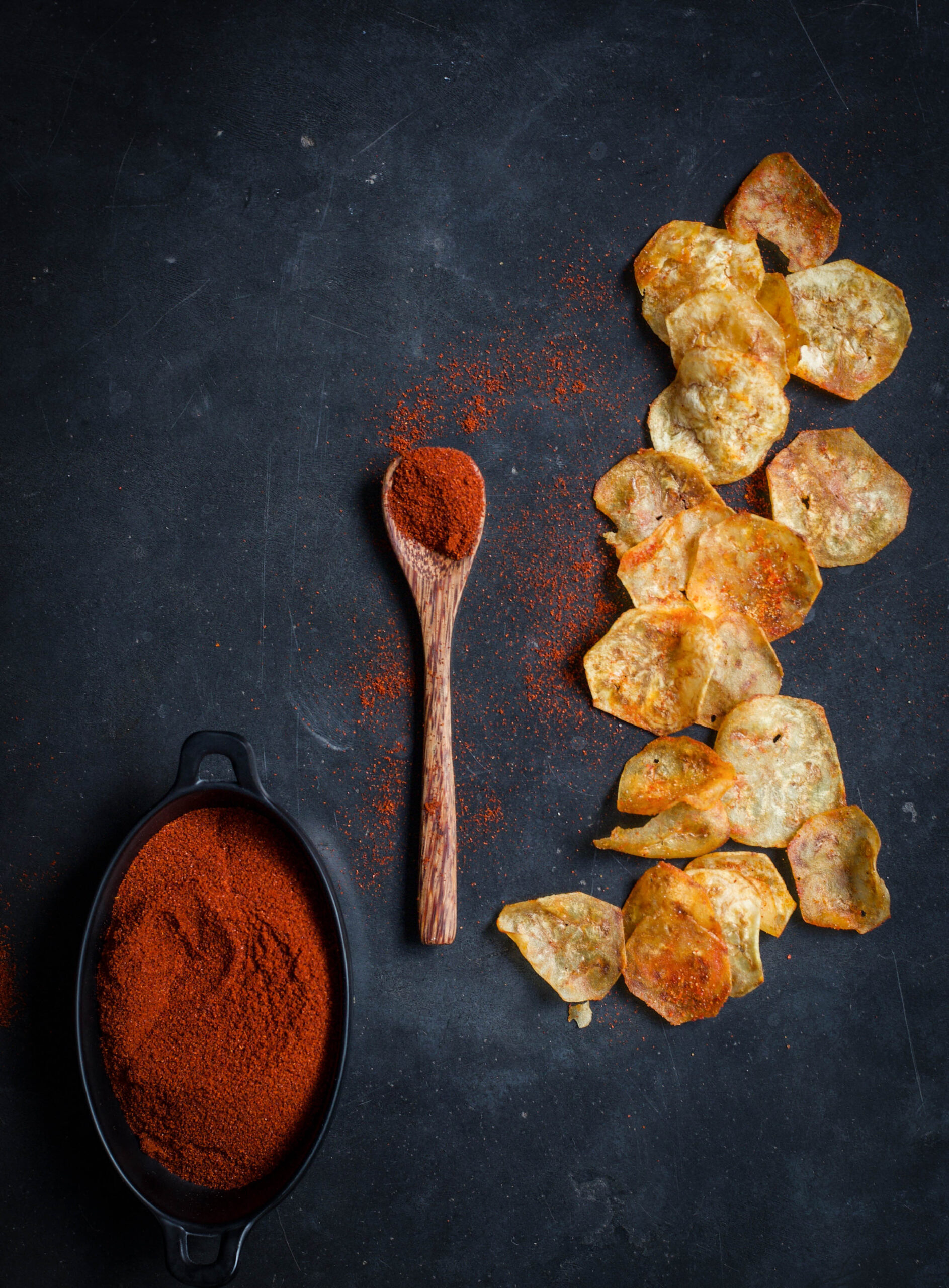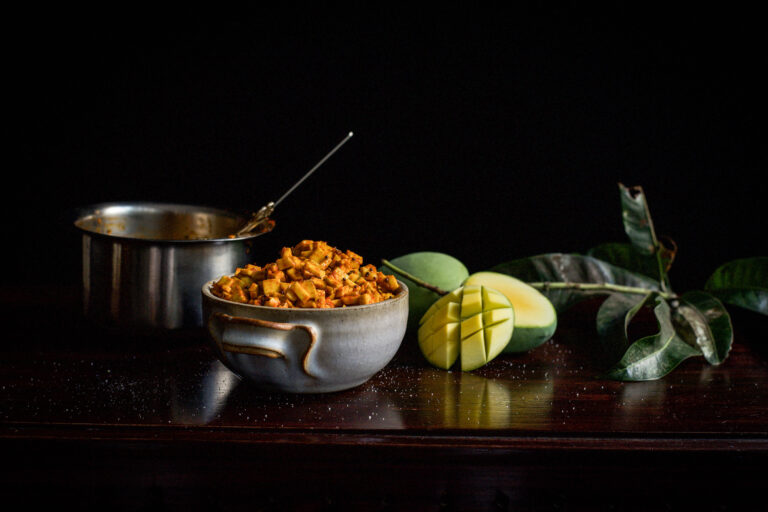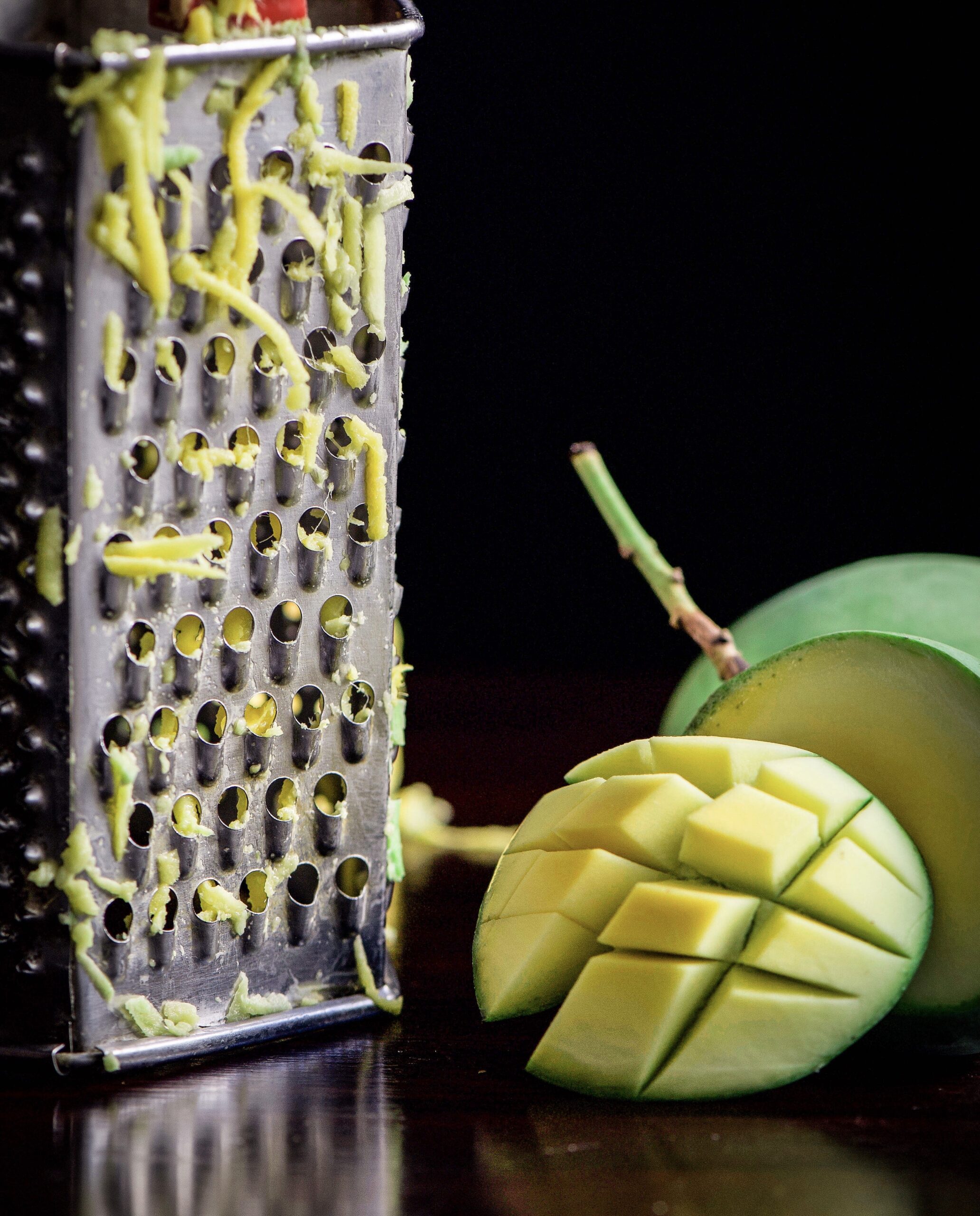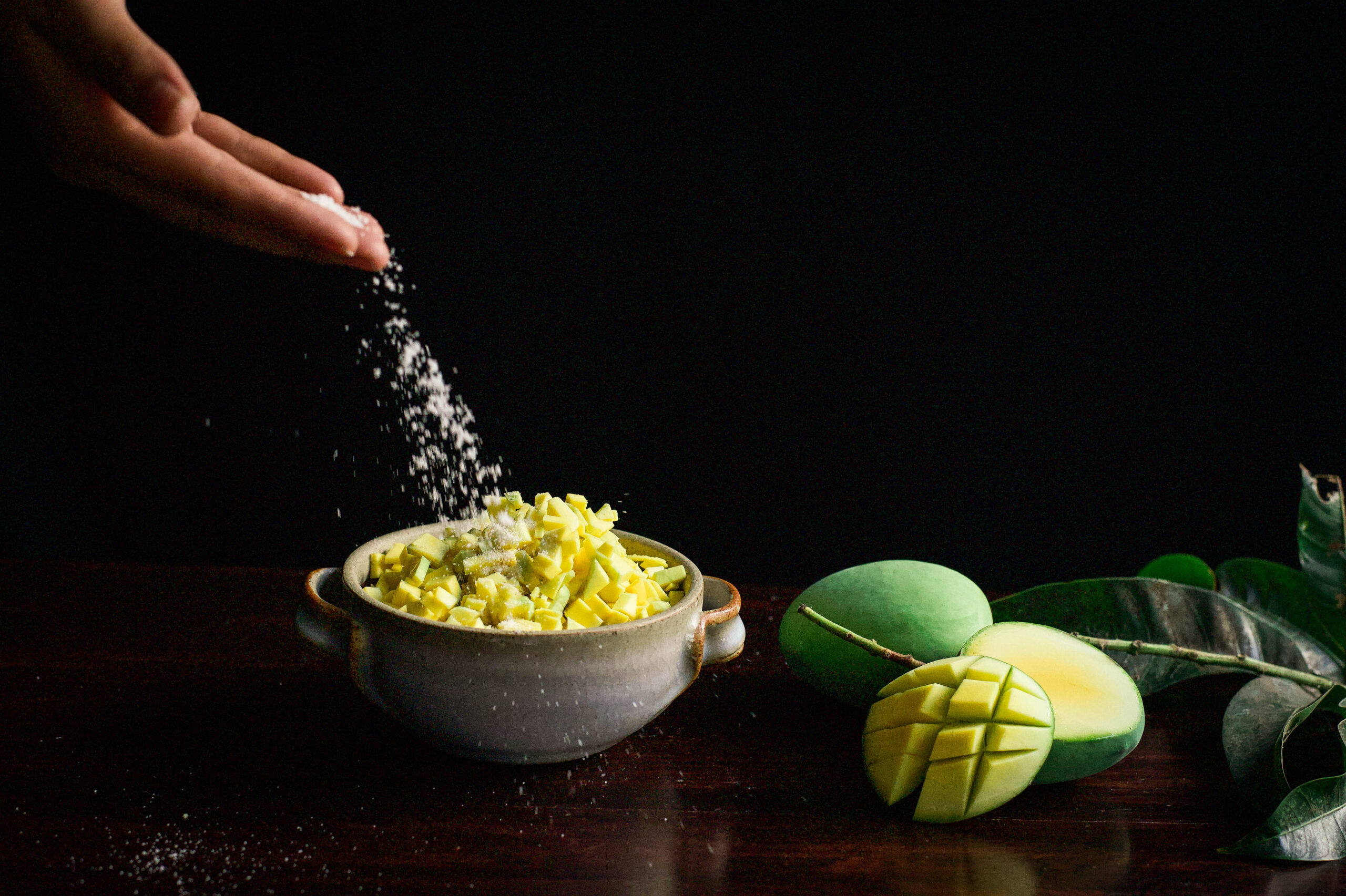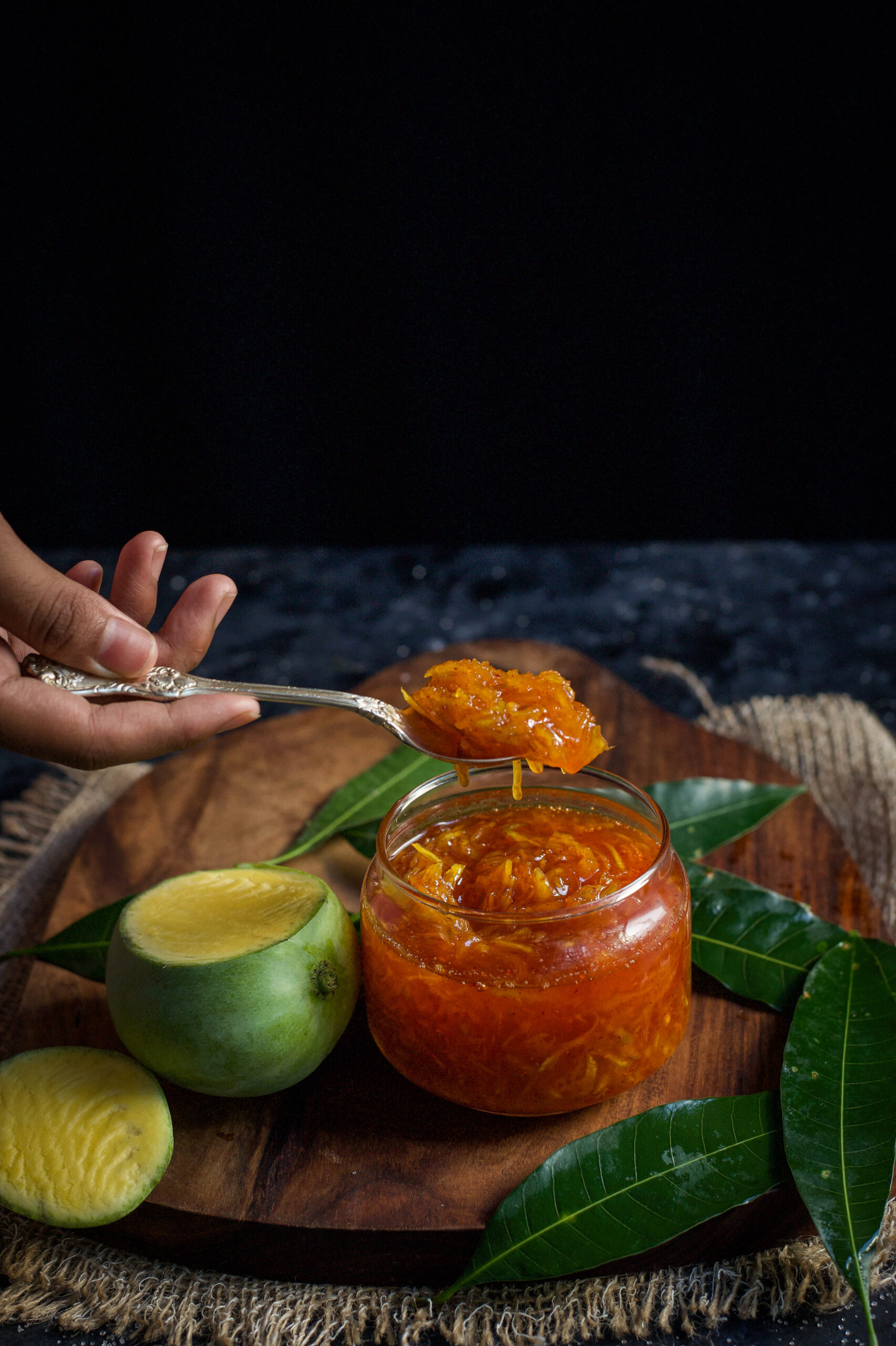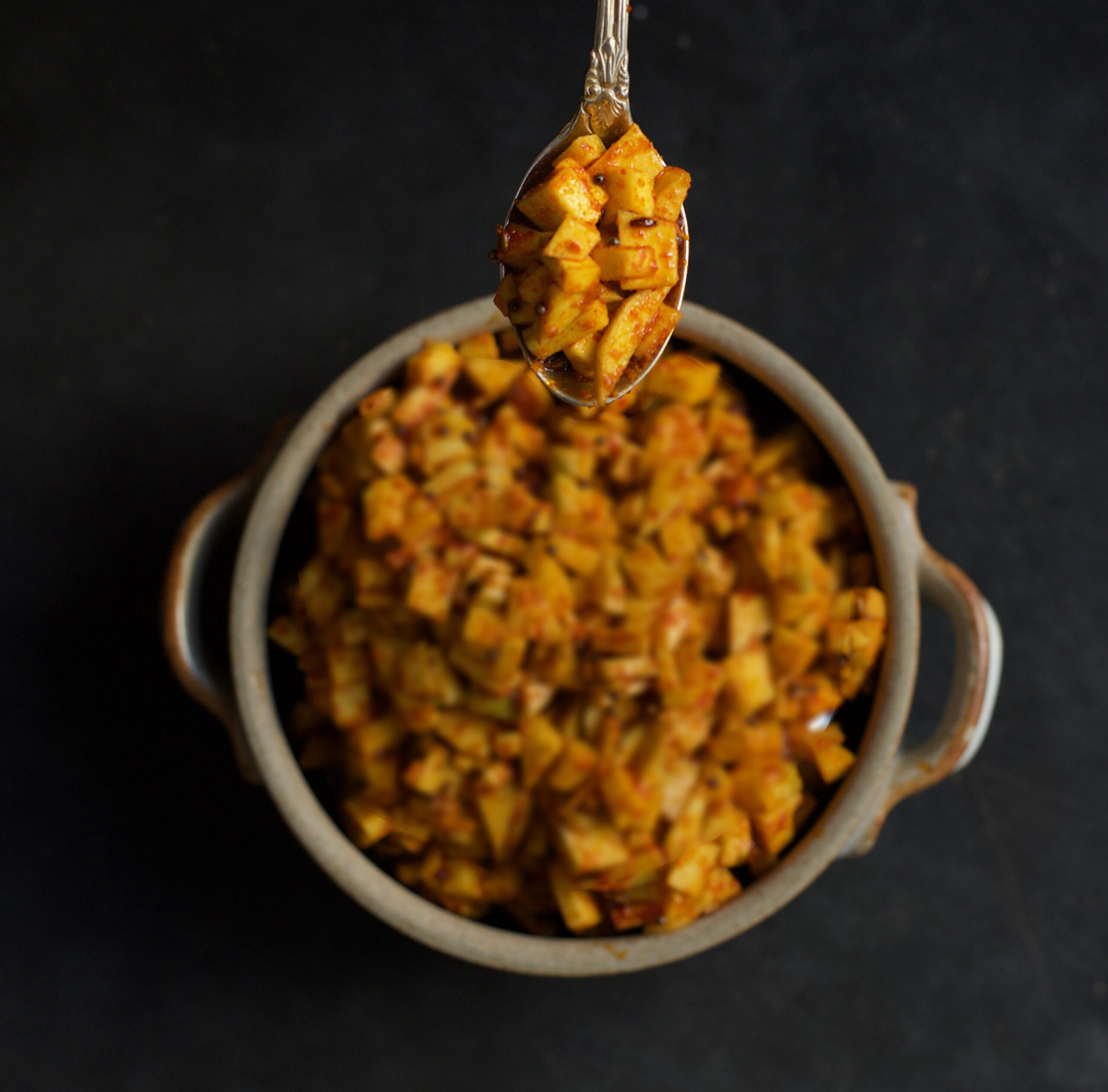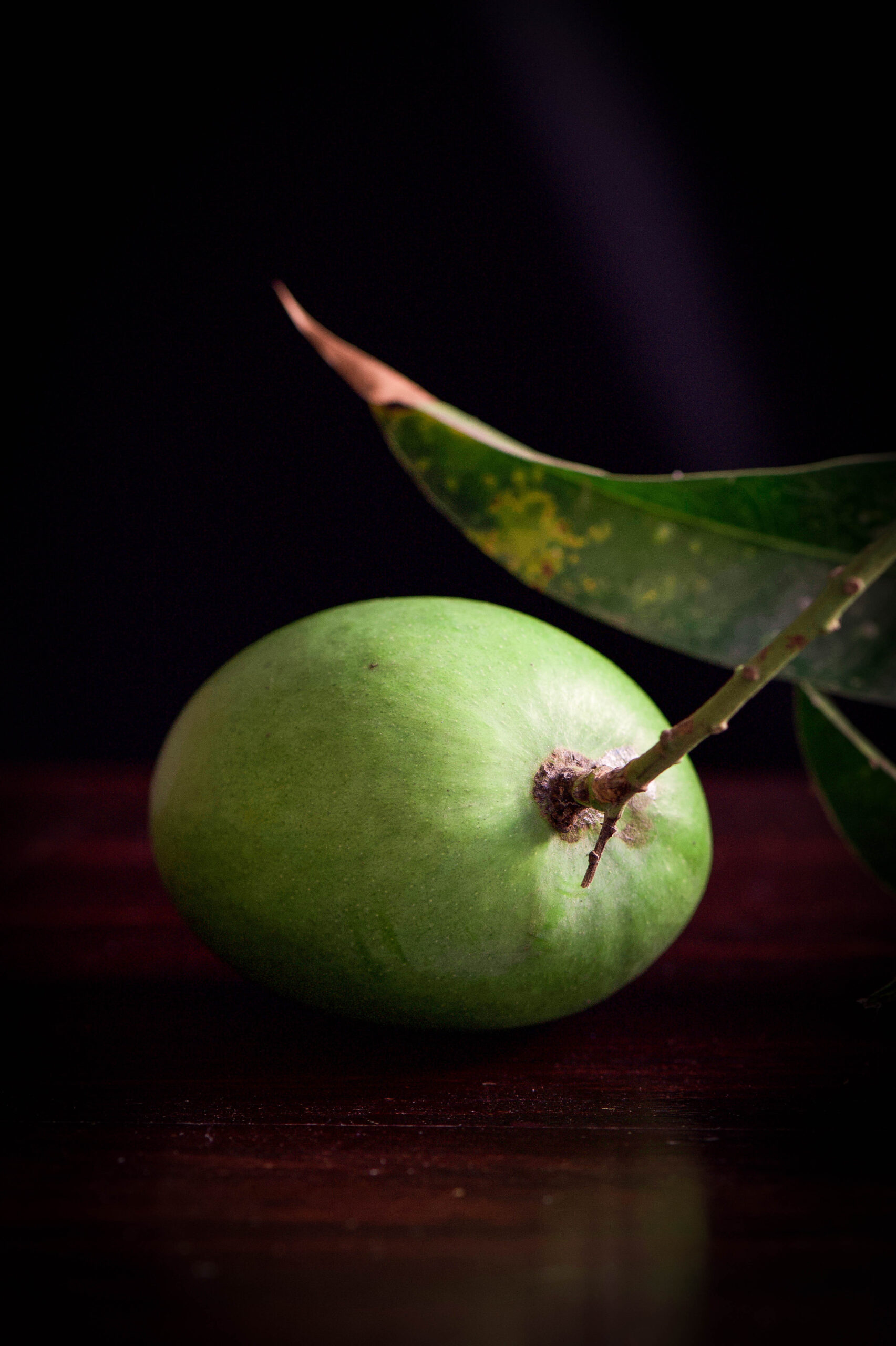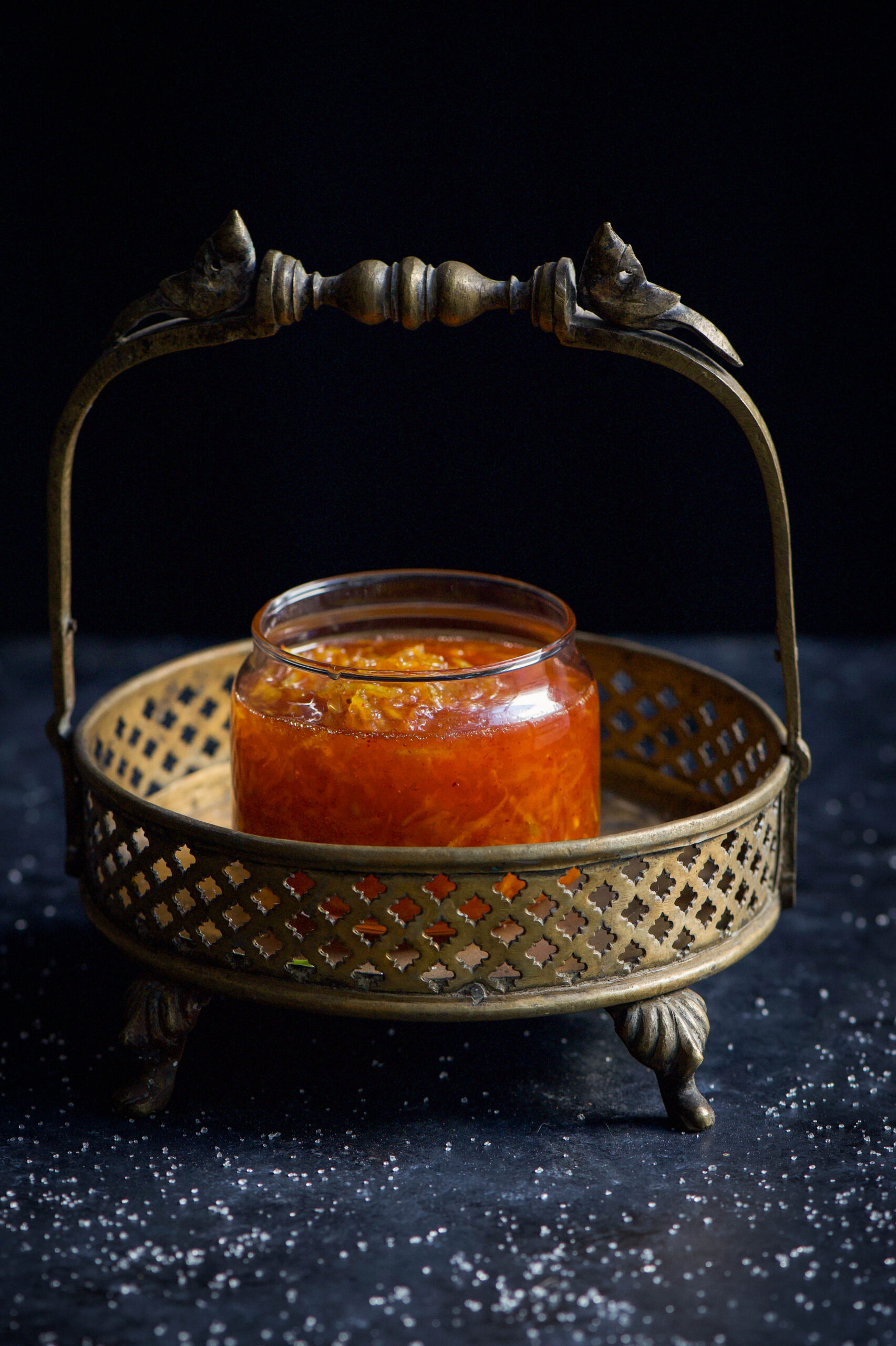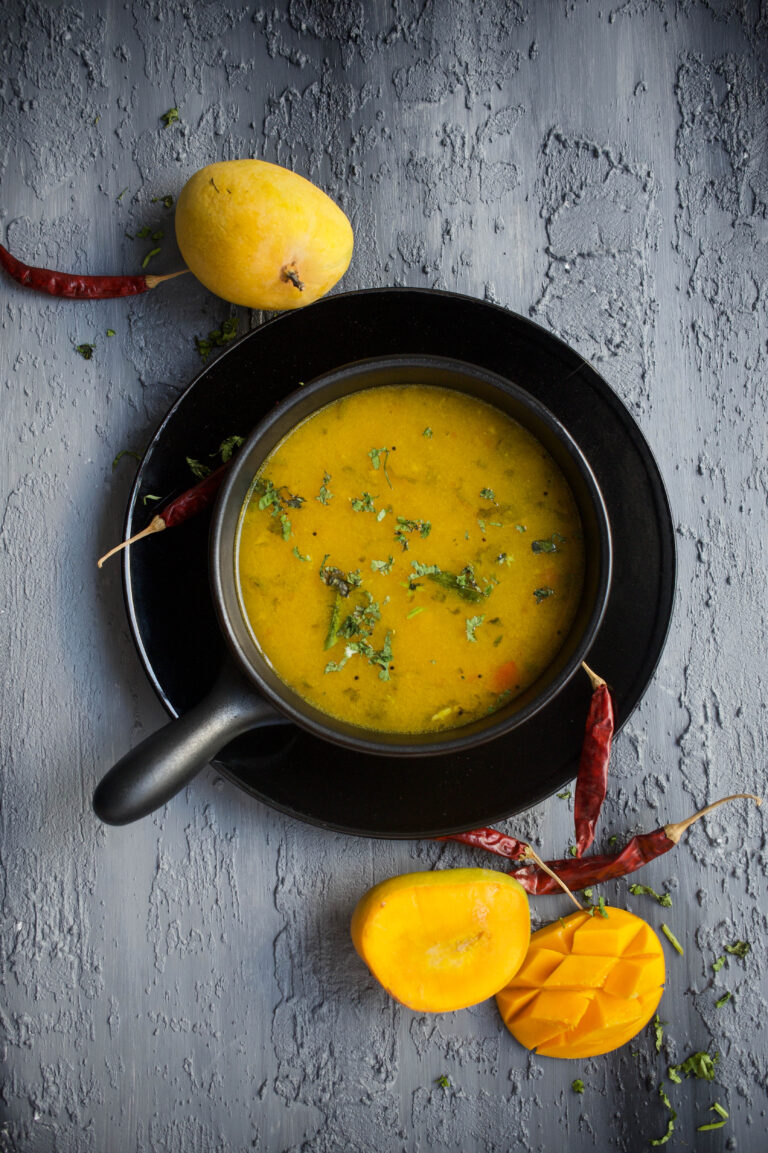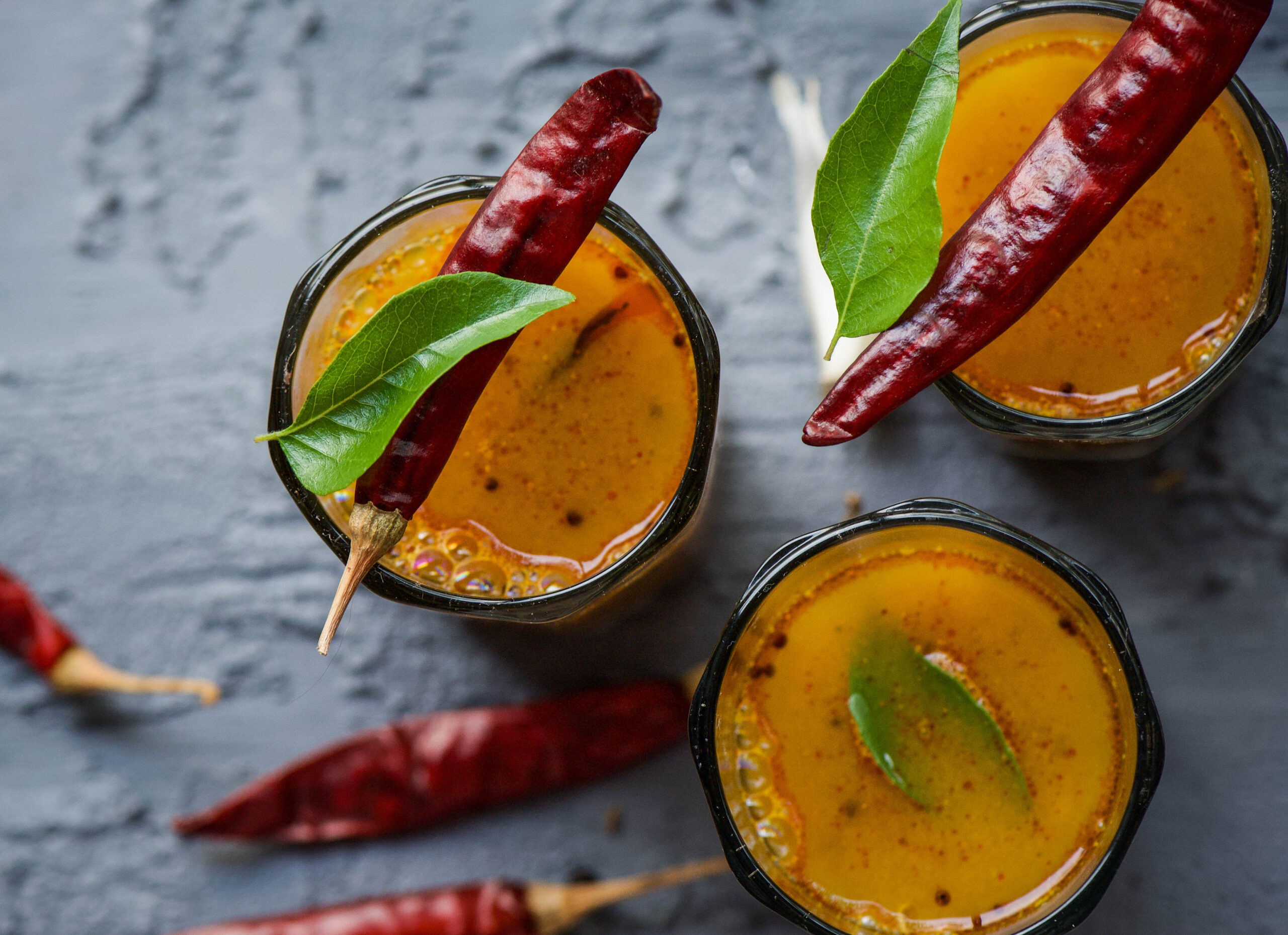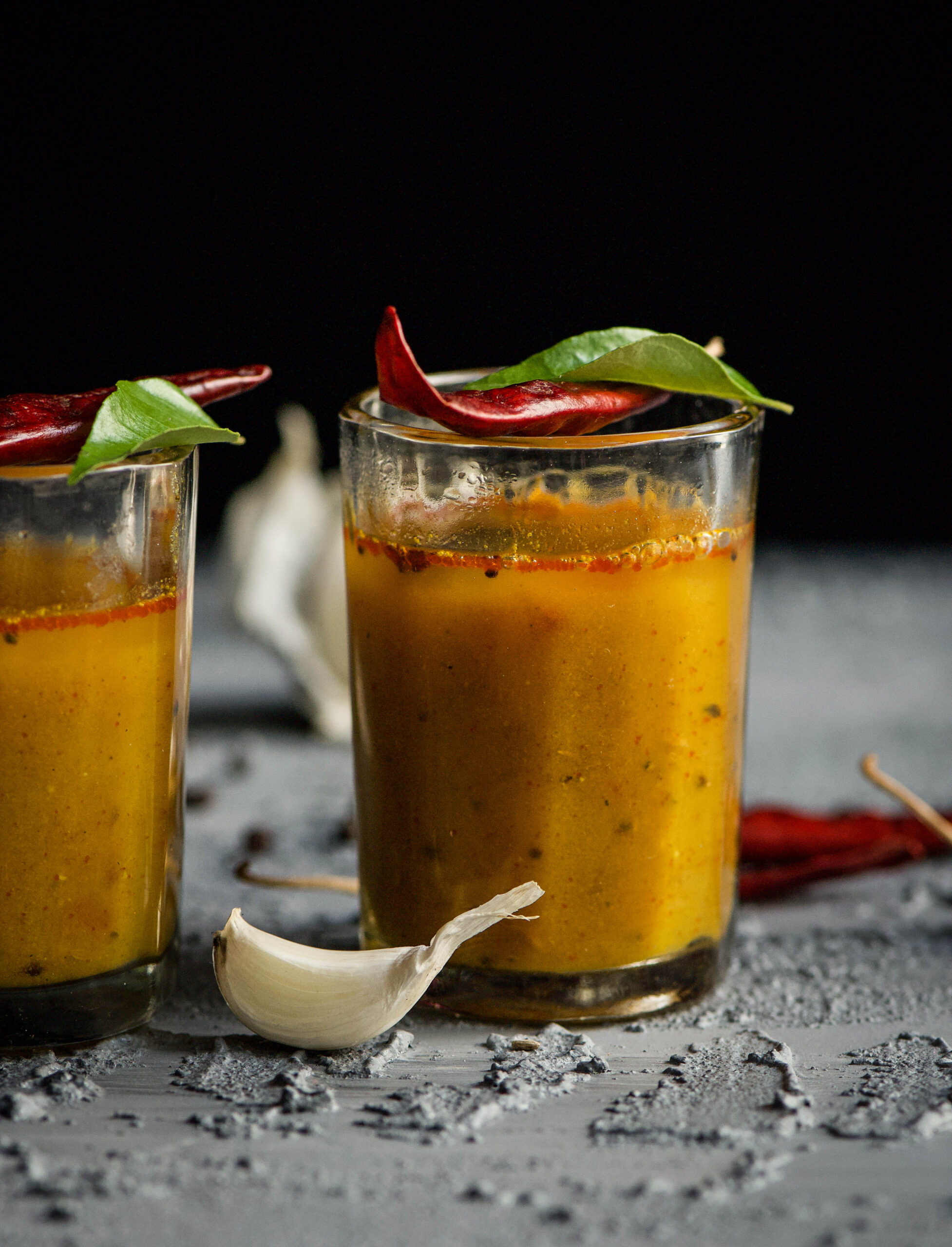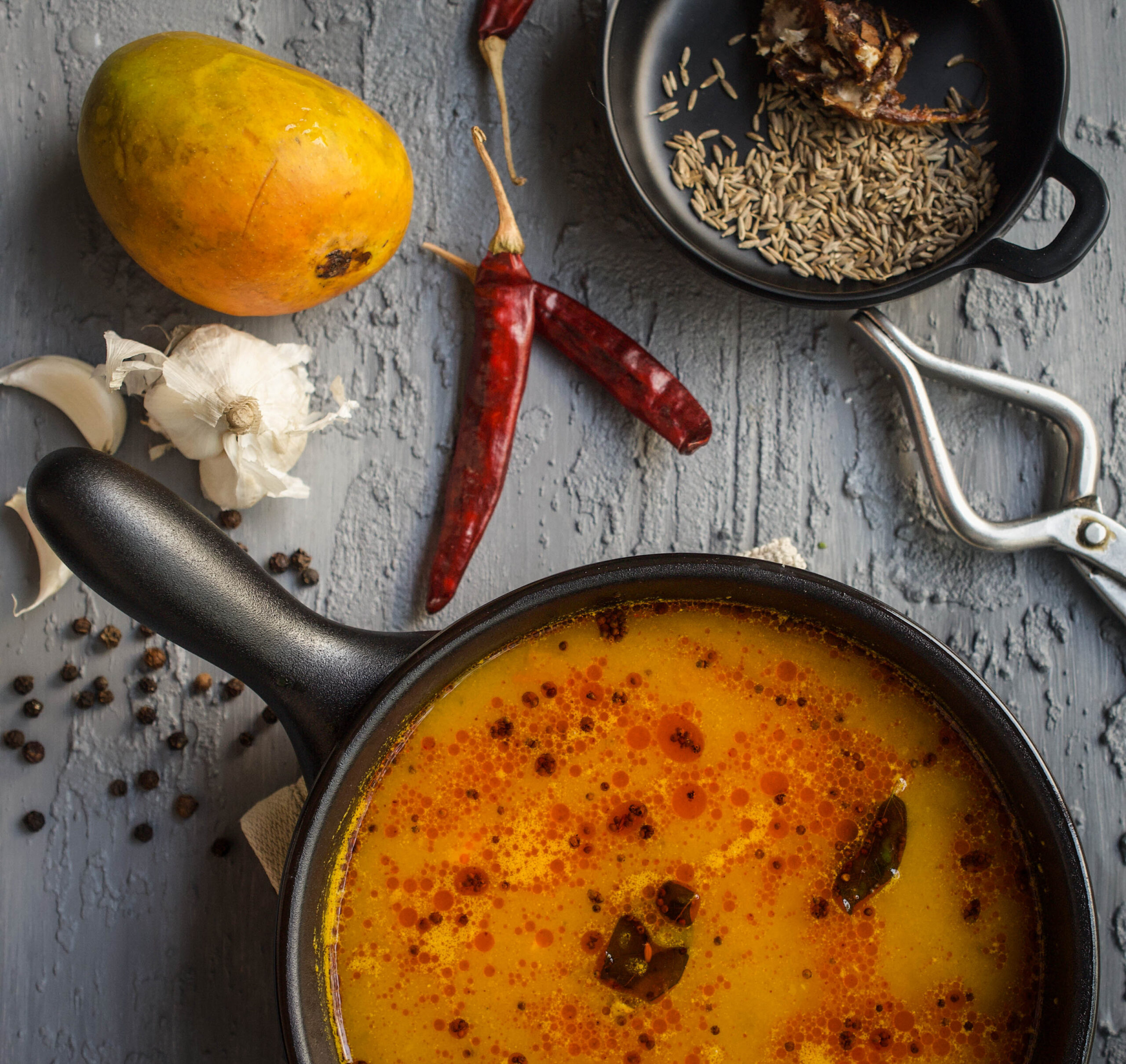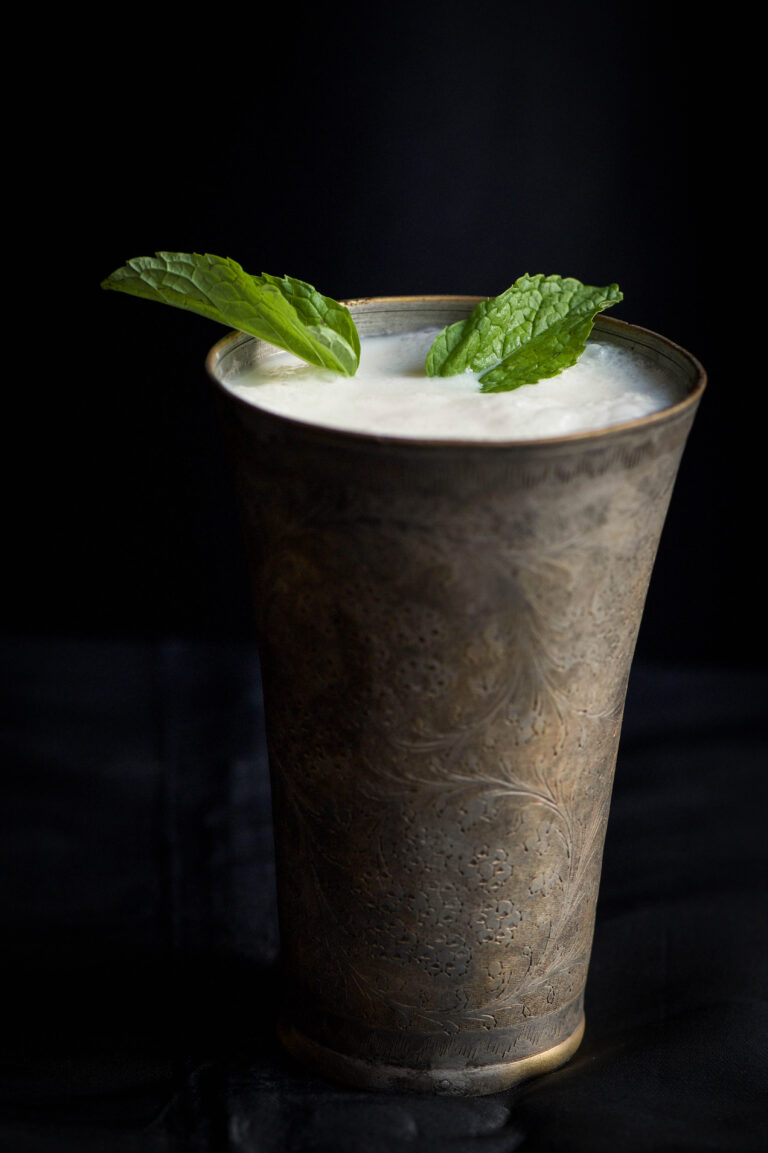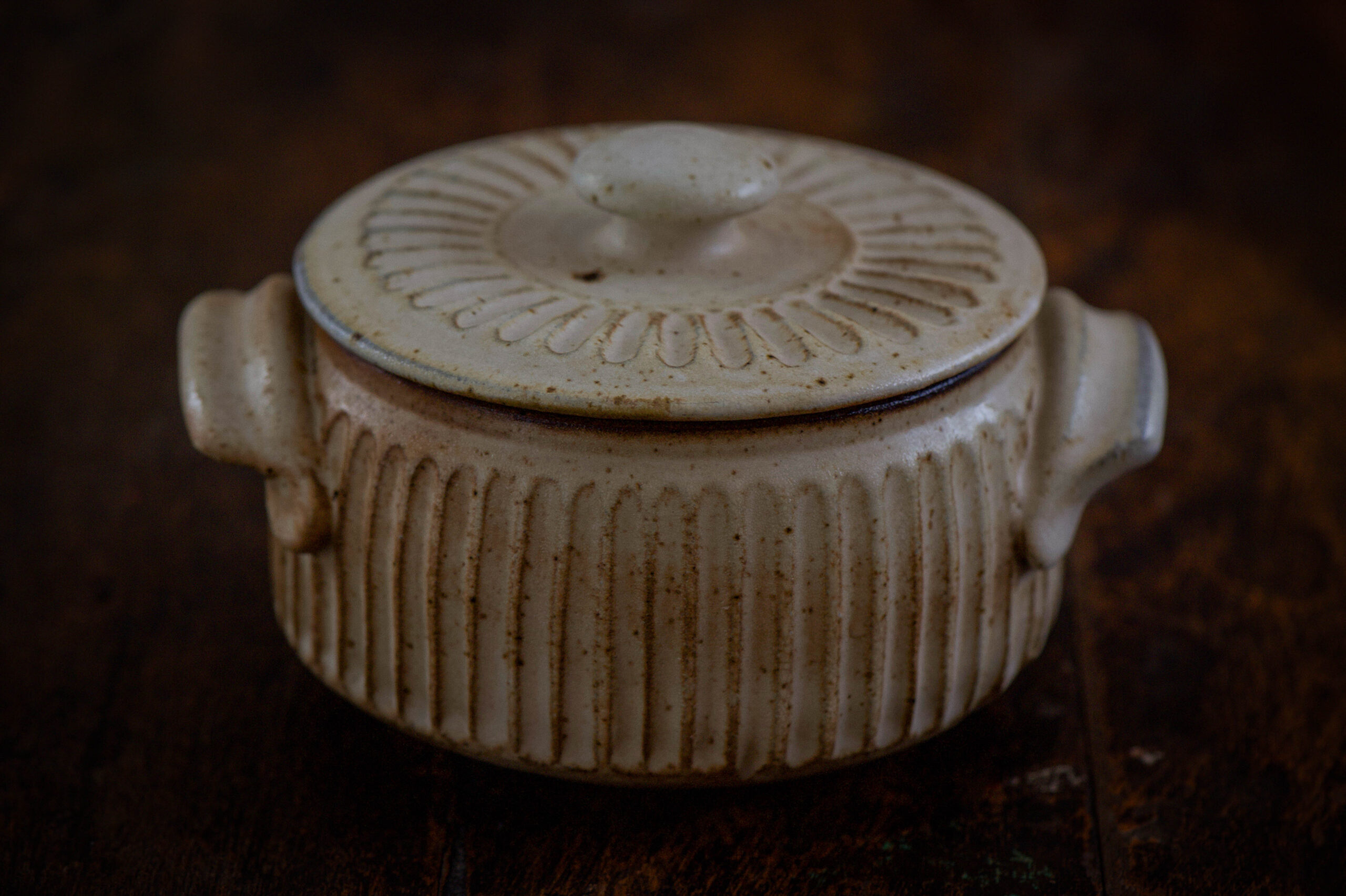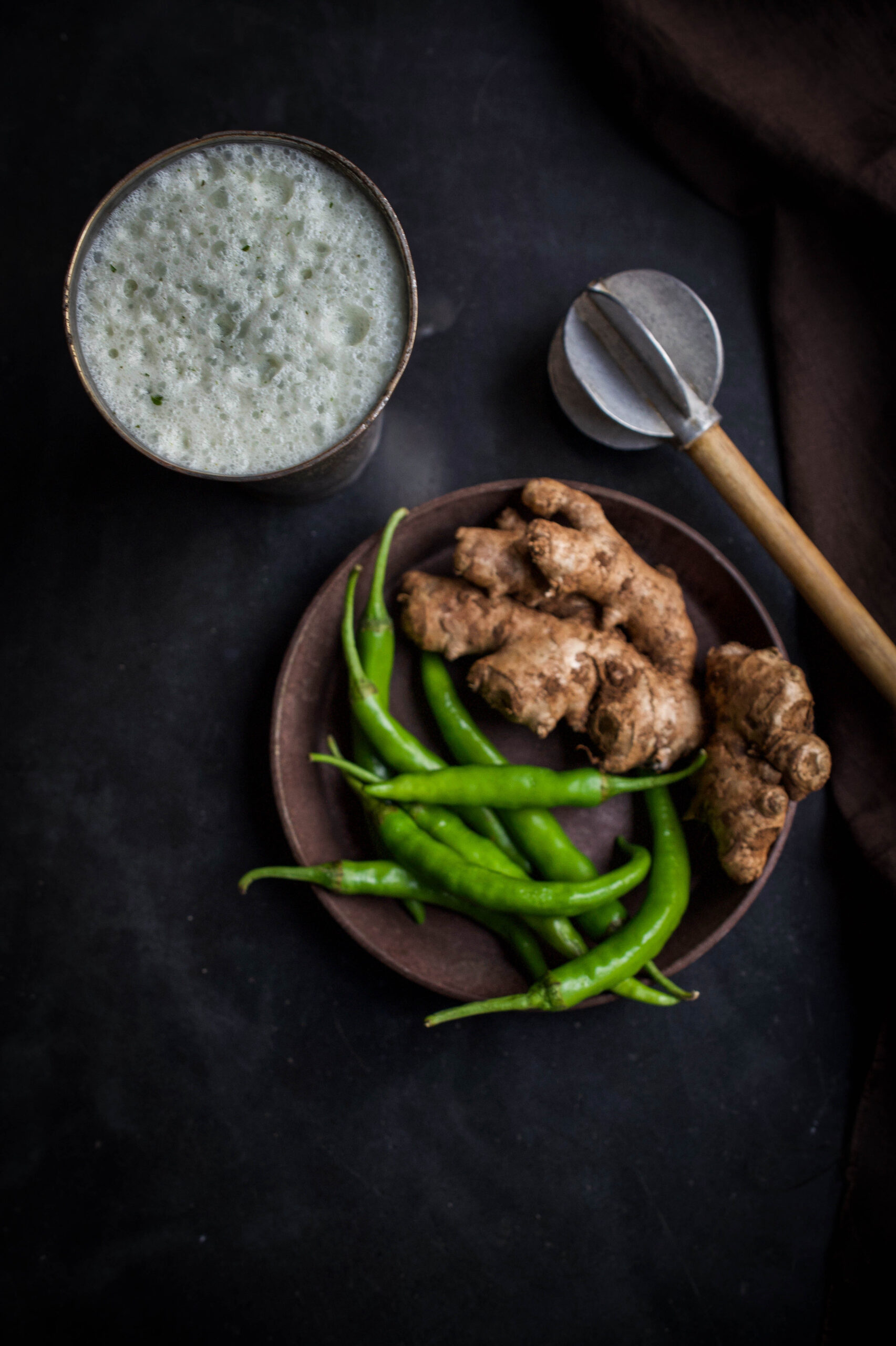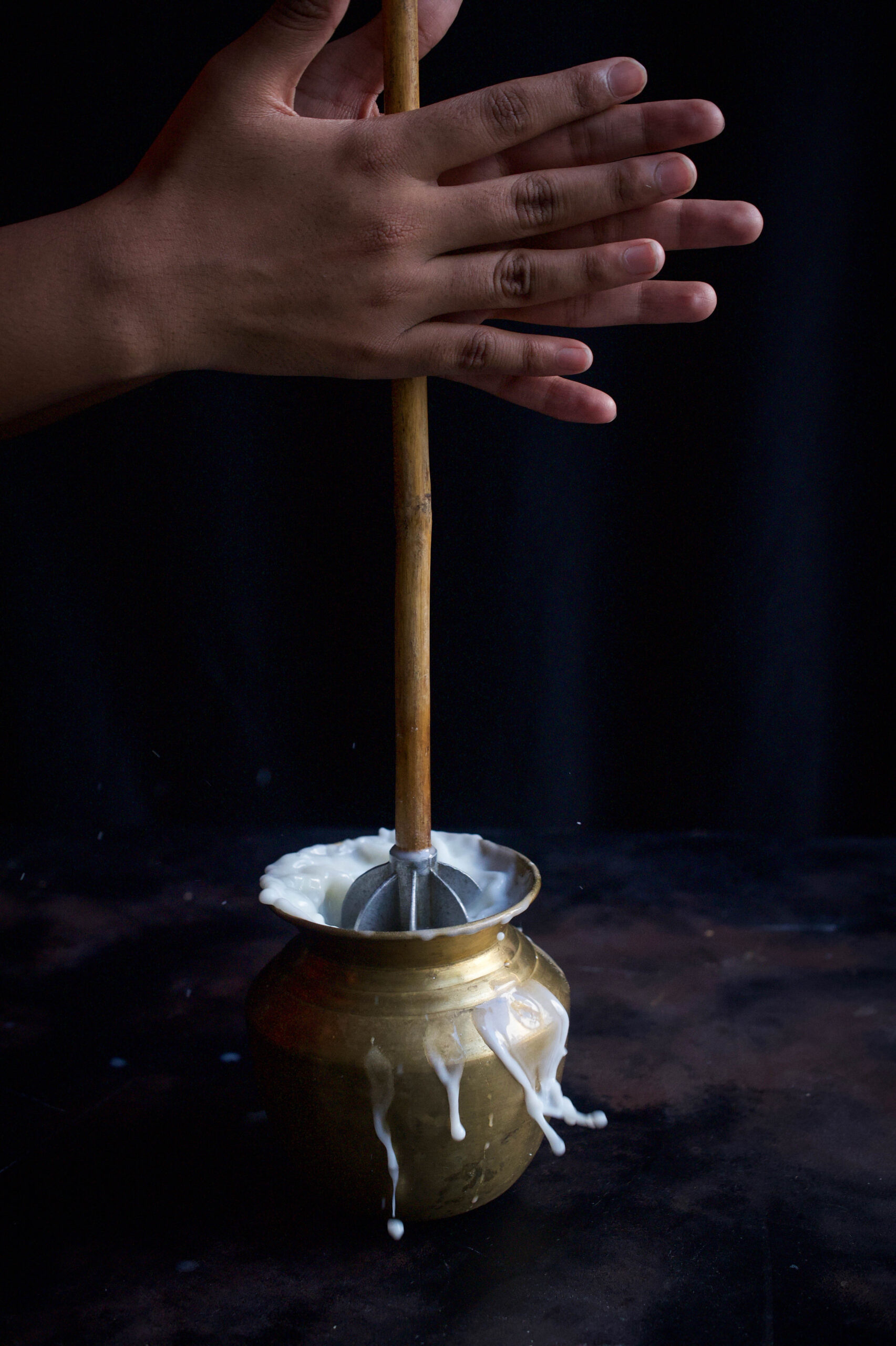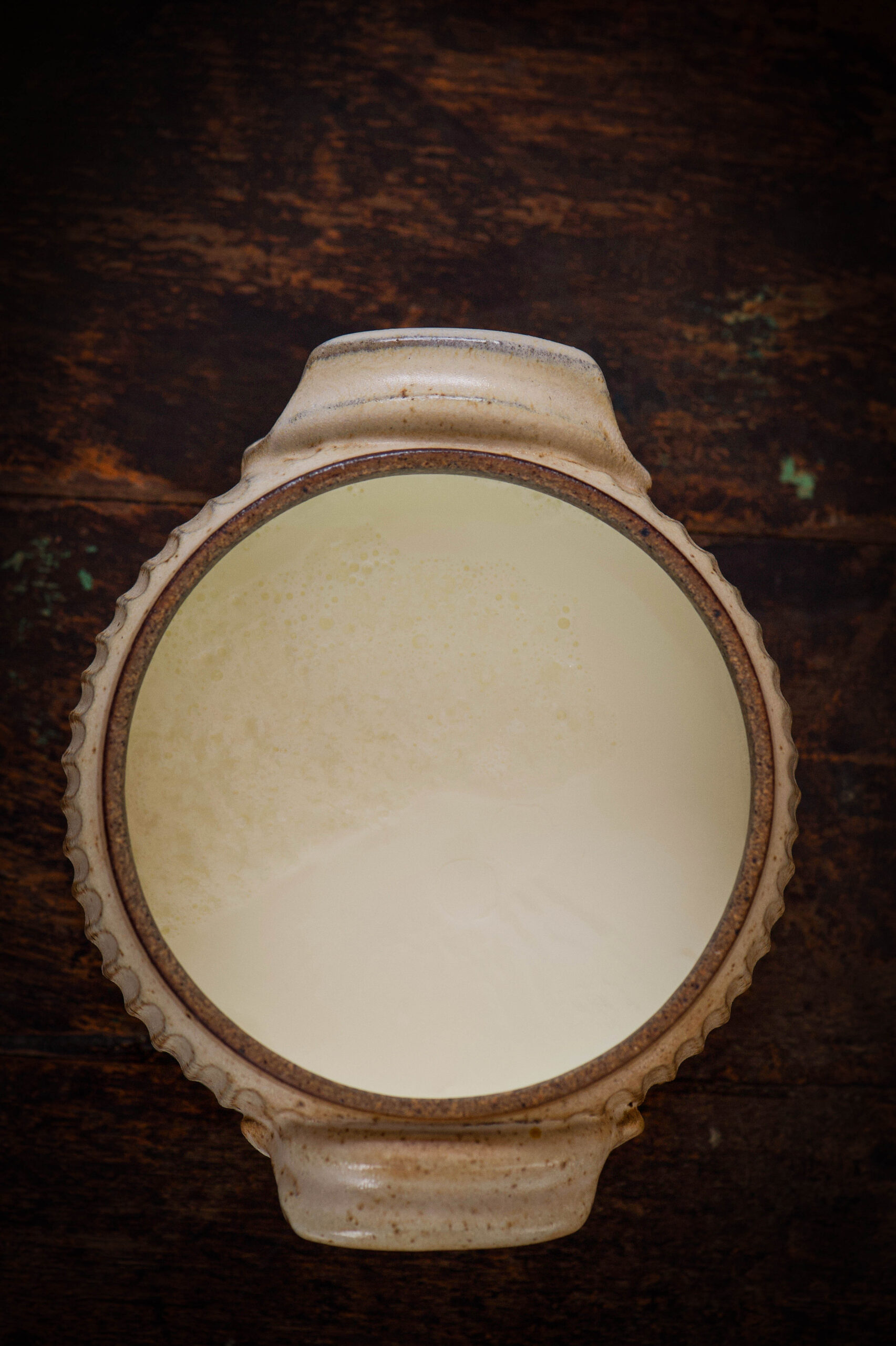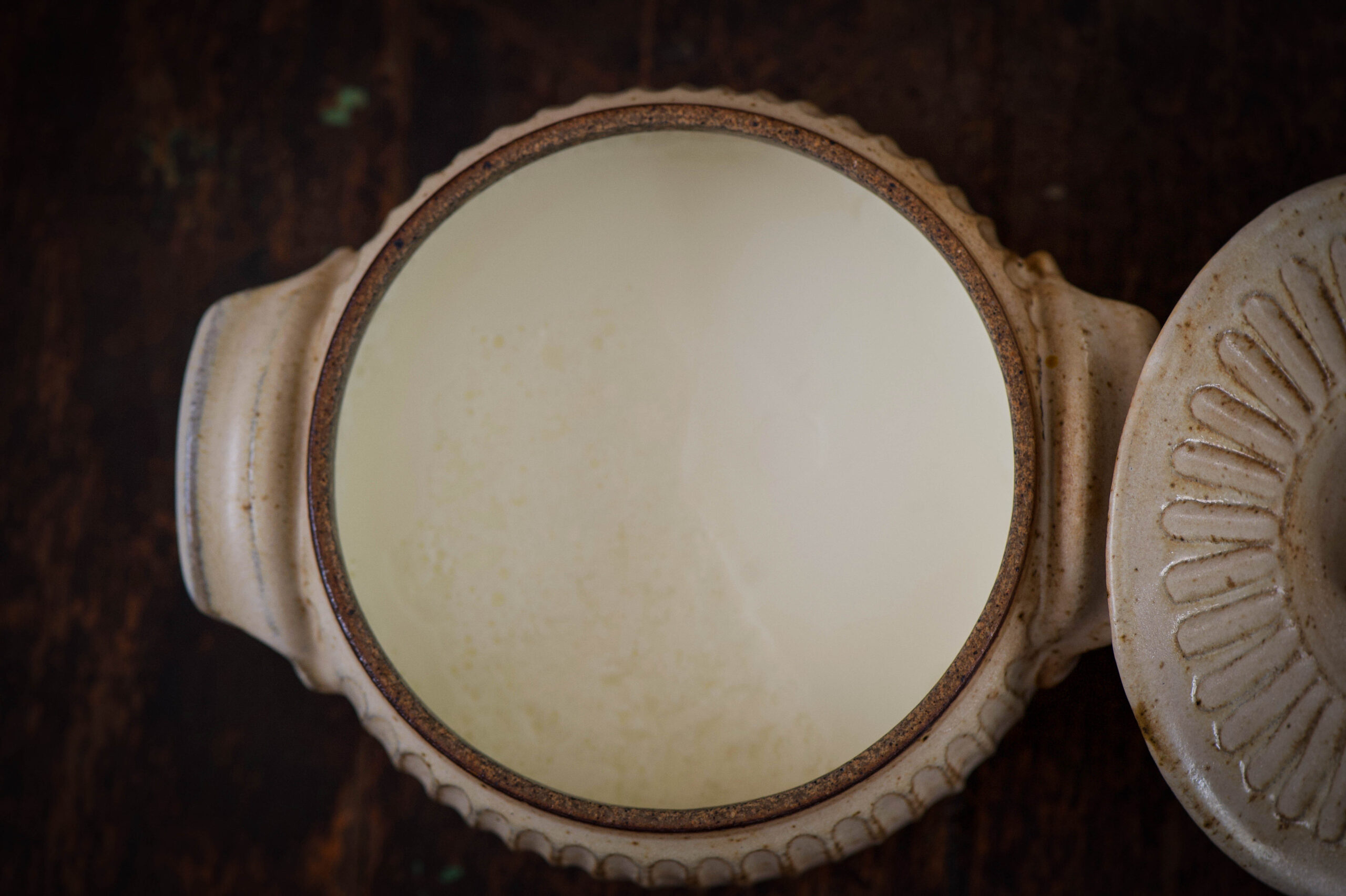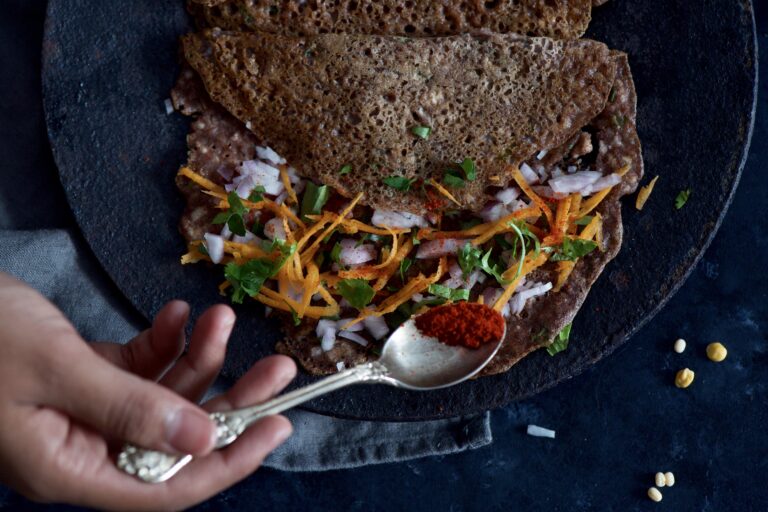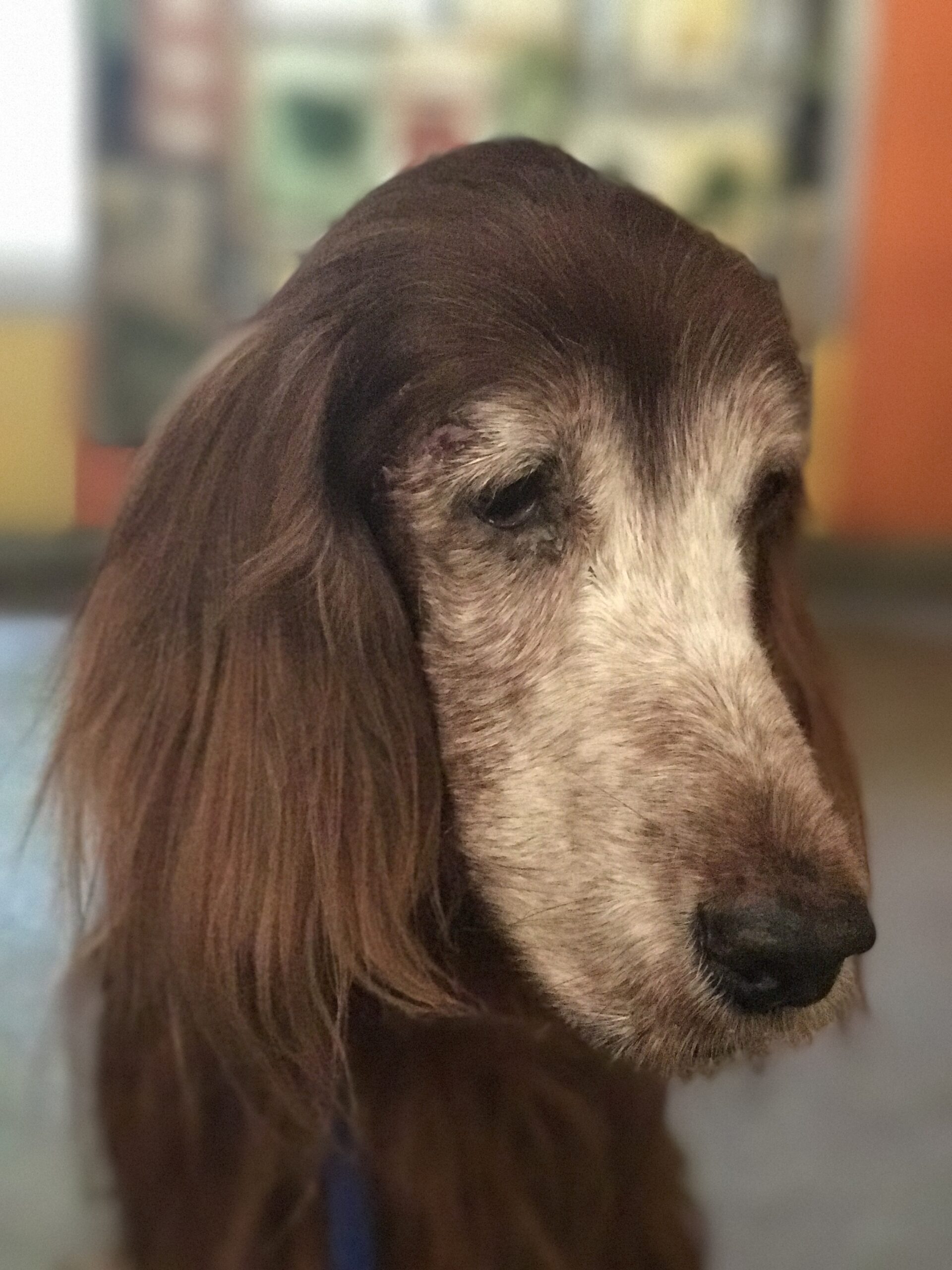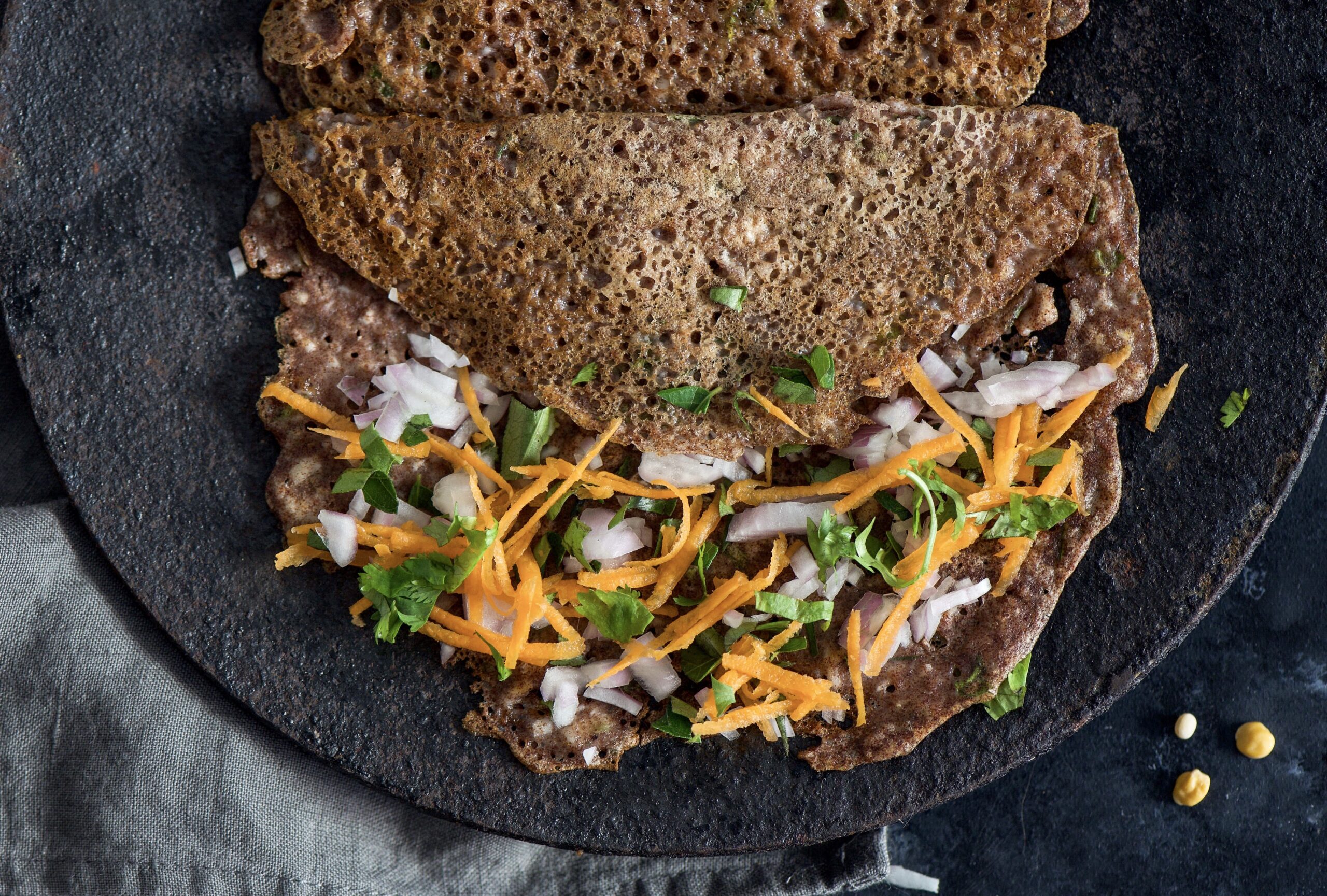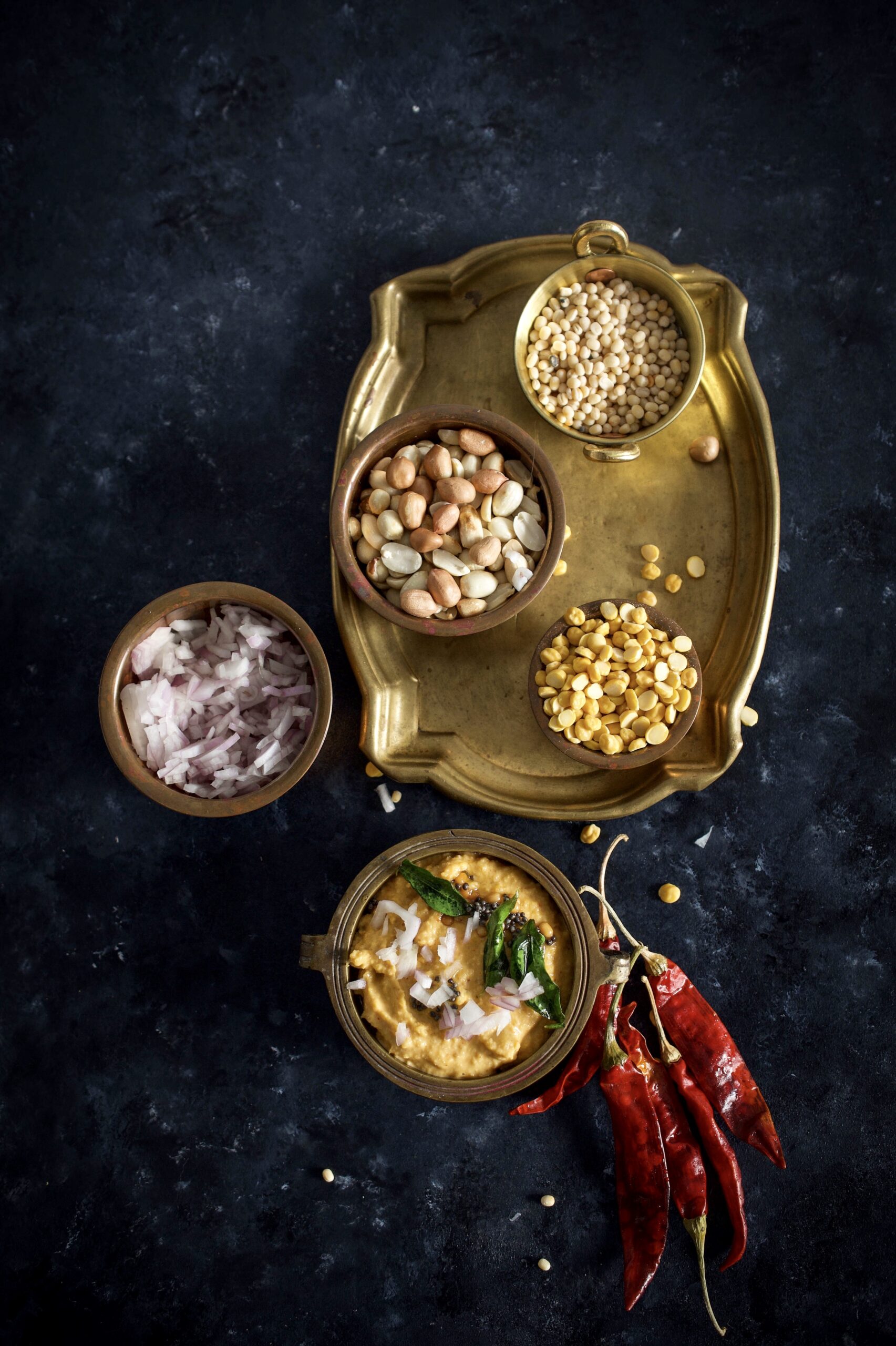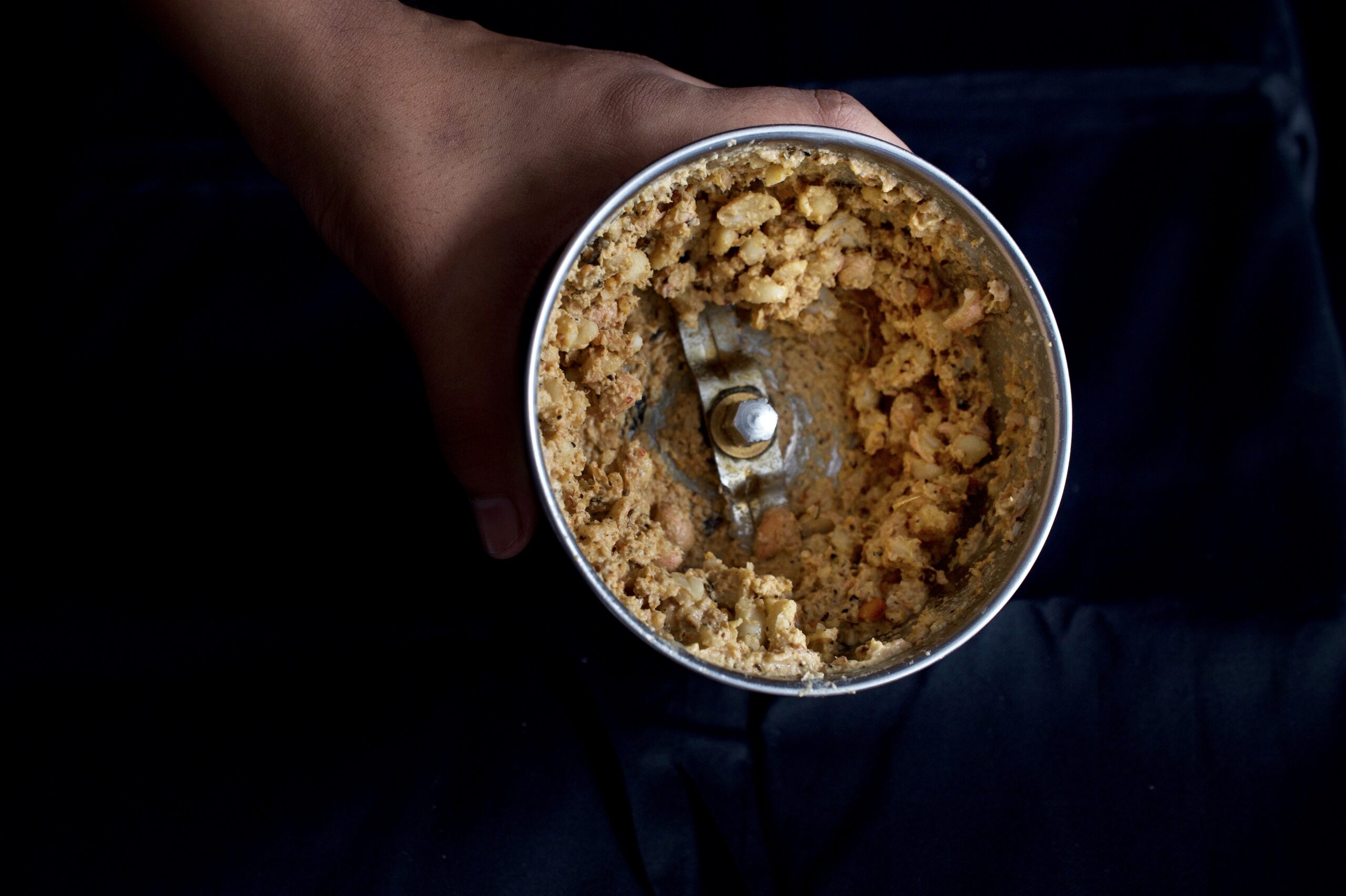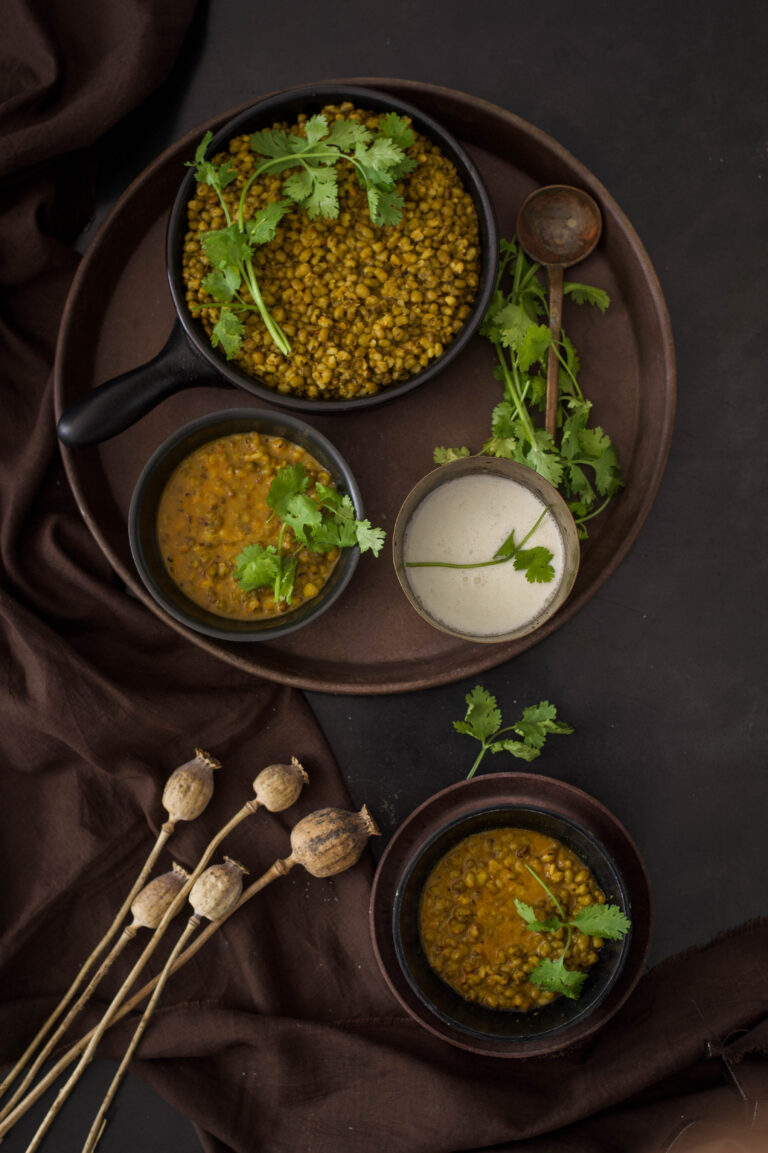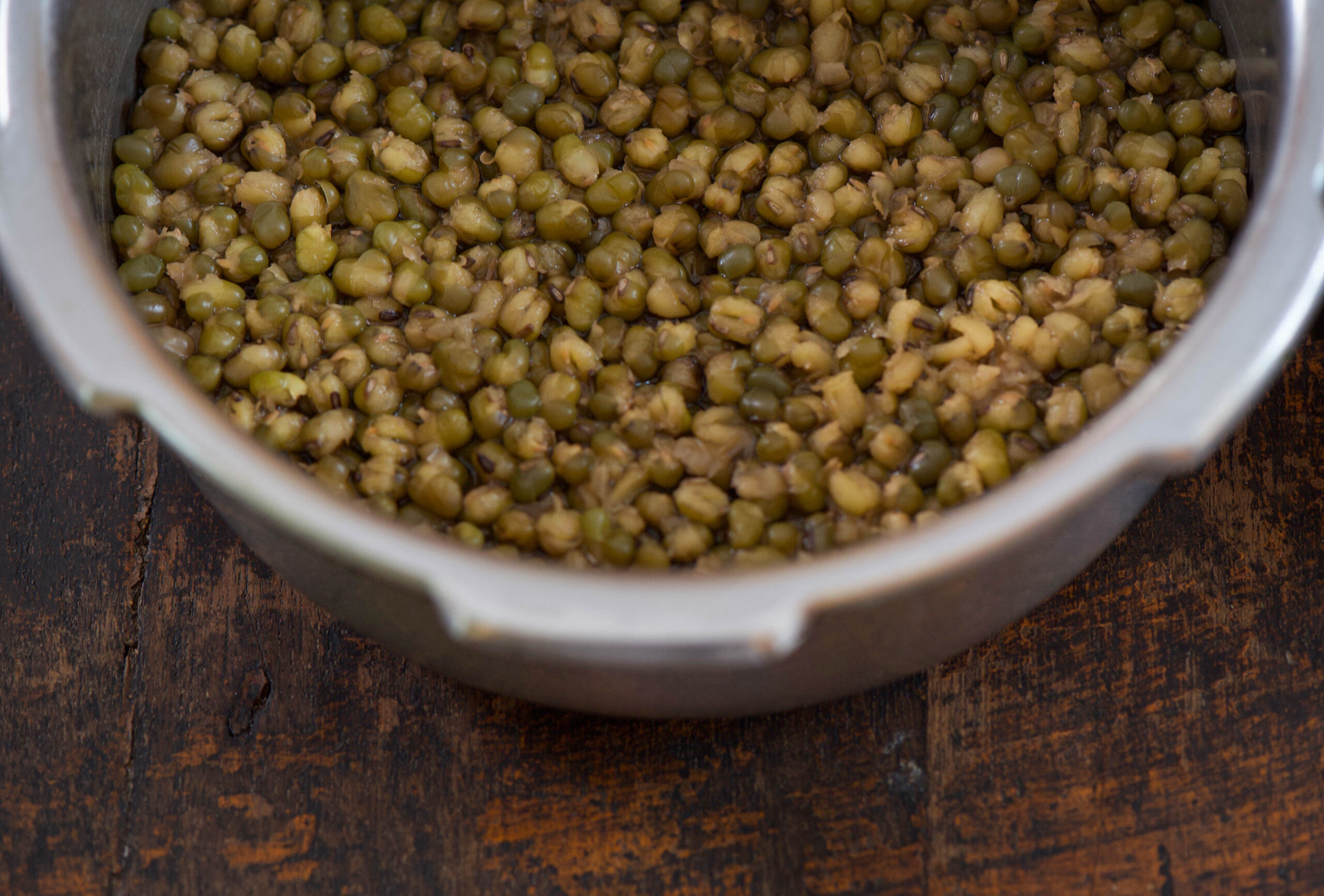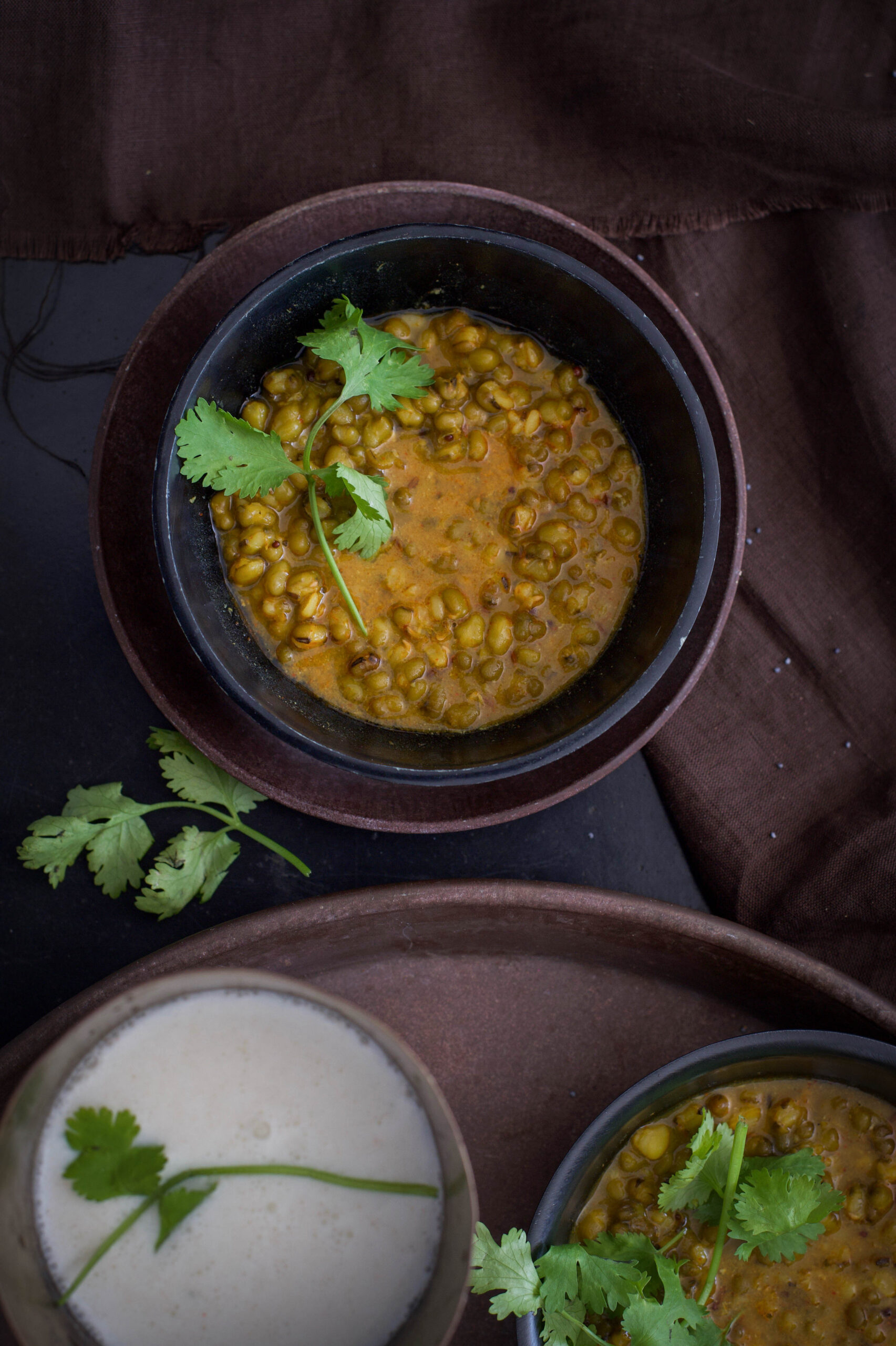
To say guava curry is a comfort food in my home is an understatement. To call it by that name doesn’t come close to accurately explaining the effect it has. It lifts the mood, changes the vibe, inspires – and always hits the spot. It is my husband (aka the Dark Prince)’s favourite. Whenever I know that he is feeling low, it’s the guavas that I reach for. Something about this guava curry does him so much good. Even though it’s a traditional Gujarati shaak (sabzi), it somehow feels like it’s a specialty in my home precisely for the way it makes us feel. It’s uplifting, soul-warming, and so delicious.
There are of course numerous varieties of guavas. They are believed to have originated in Central America, but grow well in hot climates, which is probably why India is one of the world’s top producers of the same. I am accustomed to so many names for this fruit: jamphal (the Gujarati Jain name in my husband’s home), jamrukh (the Gujarati Vaishnav name in my mother’s home), peru (as the Parsees call it, since it’s considered similar to the pear), and of course amrood in Hindi and koyapazham in Tamil. Guavas are especially popular in Gujarati Jain households during their month of fasting, as they do not consume green vegetables at that time. They are cultivated in many places in the country, and are widely and affordably available. In fact, climbing a guava tree is such a cherished memory among kids of my generation. Even growing up in cities, most of us have some anecdote about being shouted at by a cranky neighbour as we sidled along a branch to pluck a fruit, and eating it greedily even if it was still raw and green! I still have a tree in my backyard, and since guavas can be harvested almost year-round, it’s lovely to have the fruits within reach when the mood at home calls for this curry. Although I’ve used pink guavas in my photoshoot, I often cook this recipe with the white ones too.

Even as a child, I loved guava so much that whenever we visited our grandparents in Vijayawada during the summers, I would use my treat money to buy some instead of a soda or a sweet. I loved the slices dipped in a spice mix of salt, chilli powder and chaat masala. They were a crunchy, flavourful snack, and being fruit-based were naturally healthier than most things that kids like to eat. Another way in which I love eating guavas now is in the form of guava jelly, best enjoyed with a glass of wine, cheese and crackers (maybe the recipe for this will follow later – let me know if you’re interested in the comments?).
This humble and widely-available fruit is a nutritional powerhouse, with very high vitamin C, iron and antioxidant content. It’s low in calories and sugar, and has a lot of fibre – thus improving metabolism all round. It’s also 80% water, so it is hydrating as well.
The Dark Prince too grew up with guavas, and I think that must be why this guava curry has a way of chasing away his blues. The first time that I encountered this dish, having grown up with and loved the fruit but not having tasted this particular manifestation of it, was in the household of his own grandparents. Each bite transports him back to a simpler time of love and comfort, and the sweet memories of his childhood.
I learned how to make this recipe quickly, understanding how important it was going to be in my marriage! And ever since then, I’ve found new ways to make use of my favourite fruit, playing with its taste and finding complementary flavours. As human beings, we are very innovative when it comes to food, but I’ll go as far as to say I think Gujaratis are the most innovative of all, and certainly the biggest foodies I know! This delicious and inventive guava curry is proof of the same.
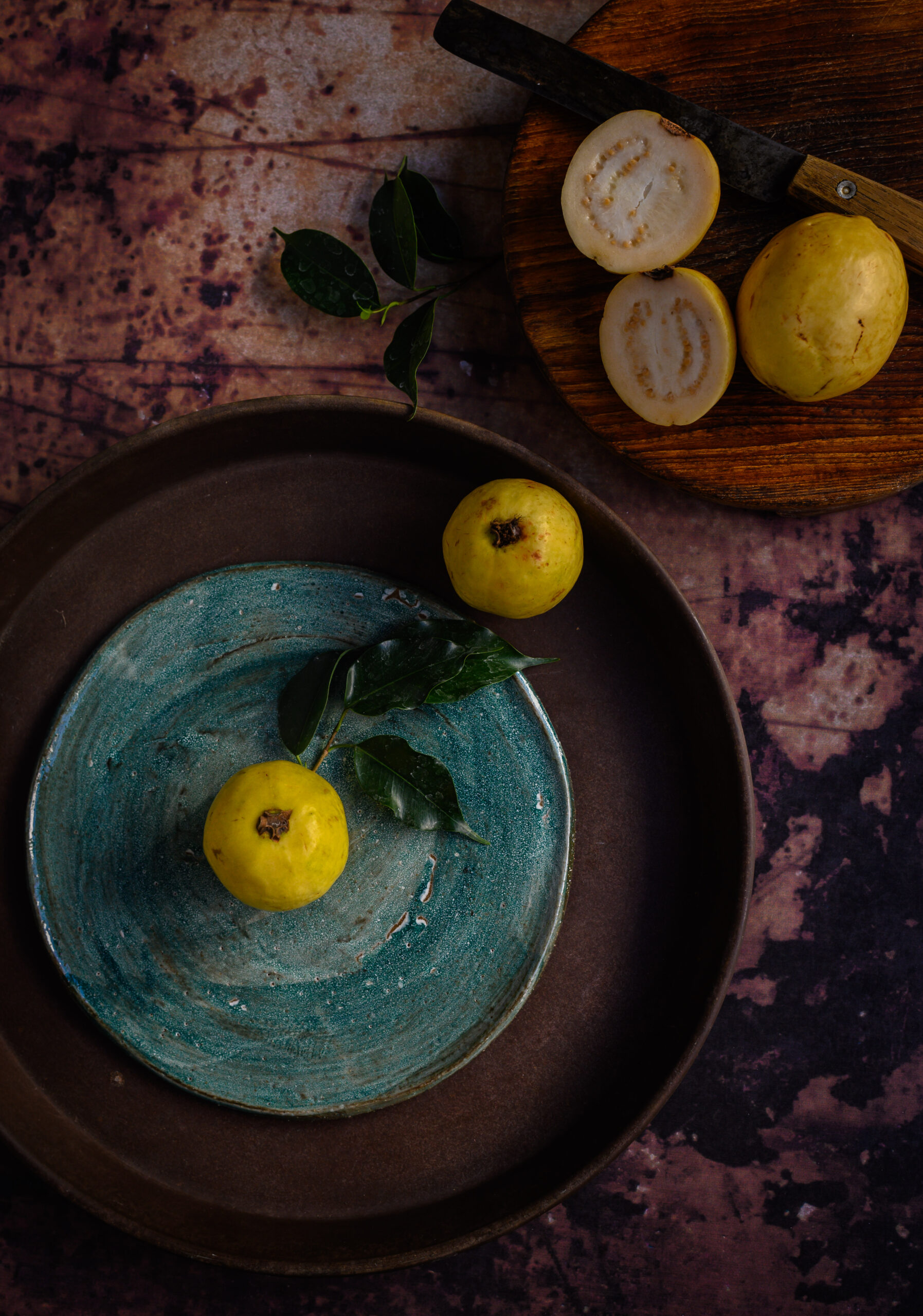
Guava Curry
(Yield: 2 cups)
1 tablespoon oil
1 cup chopped ripe guava fruit (I removed most of the seeds)
¼ teaspoon mustard seeds
¼ teaspoon cumin seeds
2 cloves
1 piece cinnamon stick
1 dry red chilli
¼ teaspoon turmeric
½ teaspoon chilli powder
½ teaspoon cumin powder
¼ teaspoon garam masala
¾ cup water
2 tablespoons jaggery
Salt to taste
In a kadai (pan), add the oil and heat on a medium flame. Once the oil is hot, add the cumin seeds and mustard seeds. Wait till they splutter. Then, add the cloves, cinnamon and dry red chilli. Immediately after, add the cut guava.
Add about a ¼ cup of water and mix well. Now, cover with a lid and allow the guavas to turn soft on a low-medium flame. This will take about 10 minutes.
Uncover, and add the cumin powder, turmeric, salt, garam masala, chilli powder and jaggery. Stir, then add the remaining water. Allow to blend and cook for a few more minutes on a medium flame.
Despite being cooked with so many condiments and softened until the crisp texture is gone, you will find that this guava curry retains a great deal of the flavour of the fruit. Like good Gujarati foodies, we enjoy it most with rotlis, but you could have it with rice too. It’s spicy, tangy and has a hint of sweetness (from the jaggery, if not the fruit). I hope you’ll be as proud of having this unusual yet iconic recipe in your repertoire as I am. And I hope it lifts the mood in your home too!
